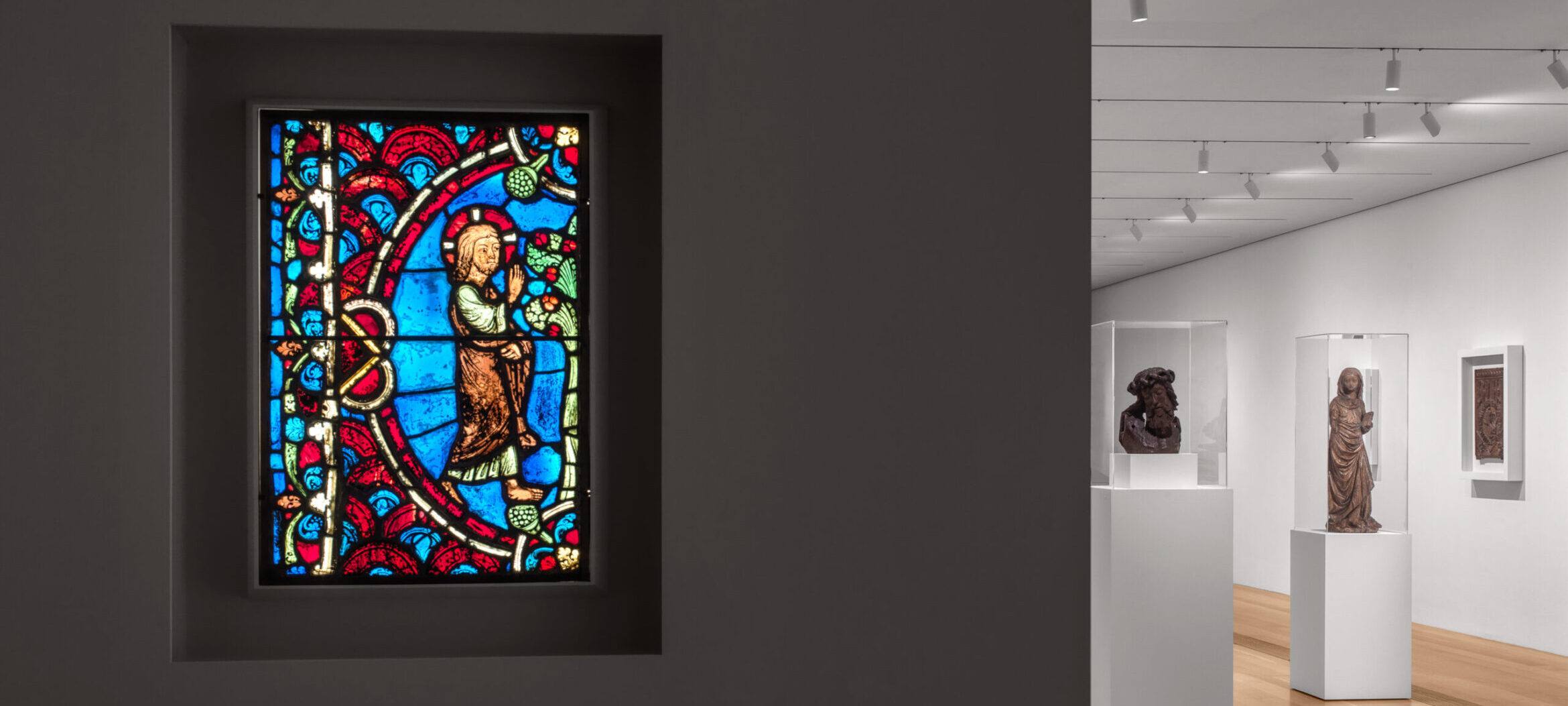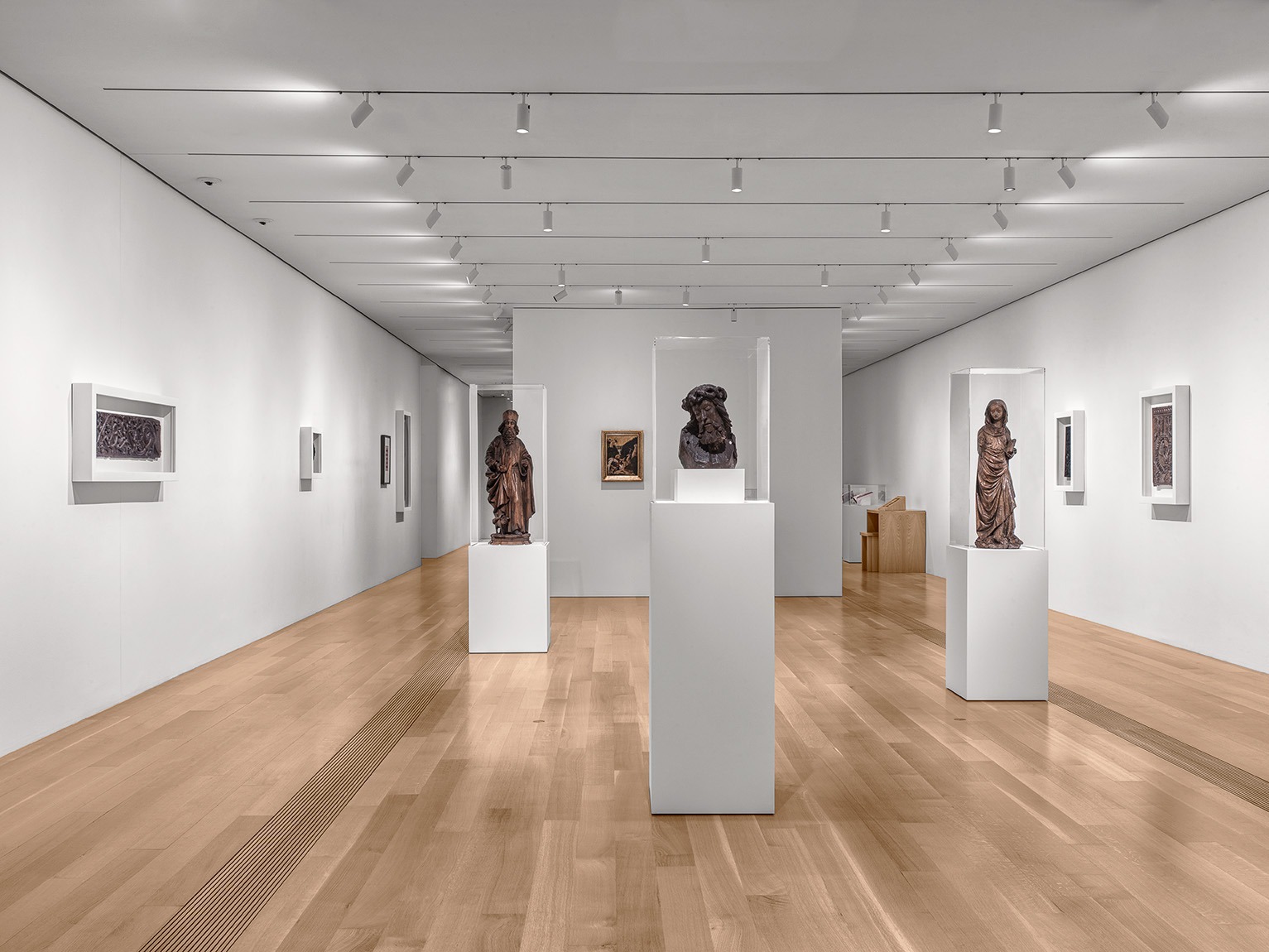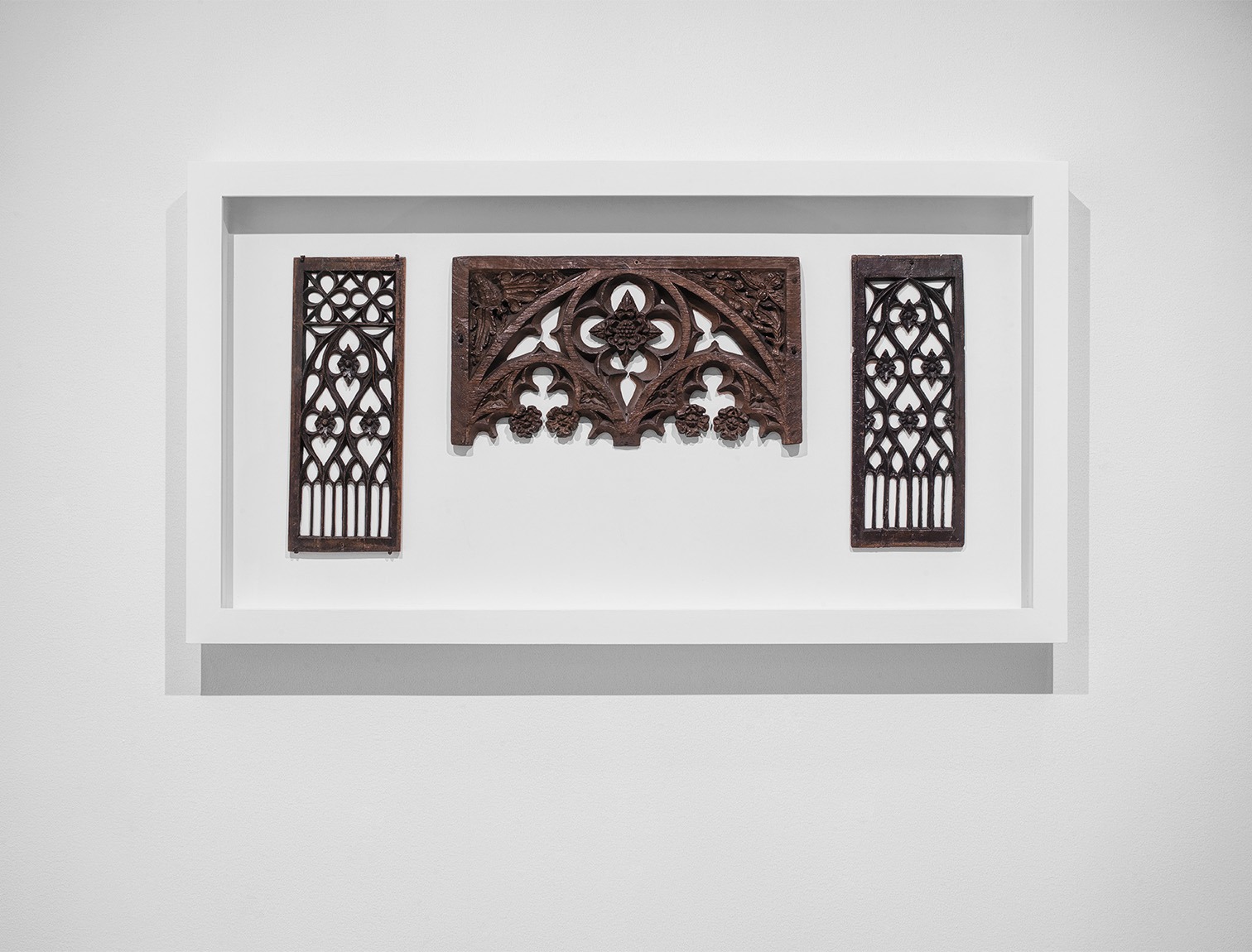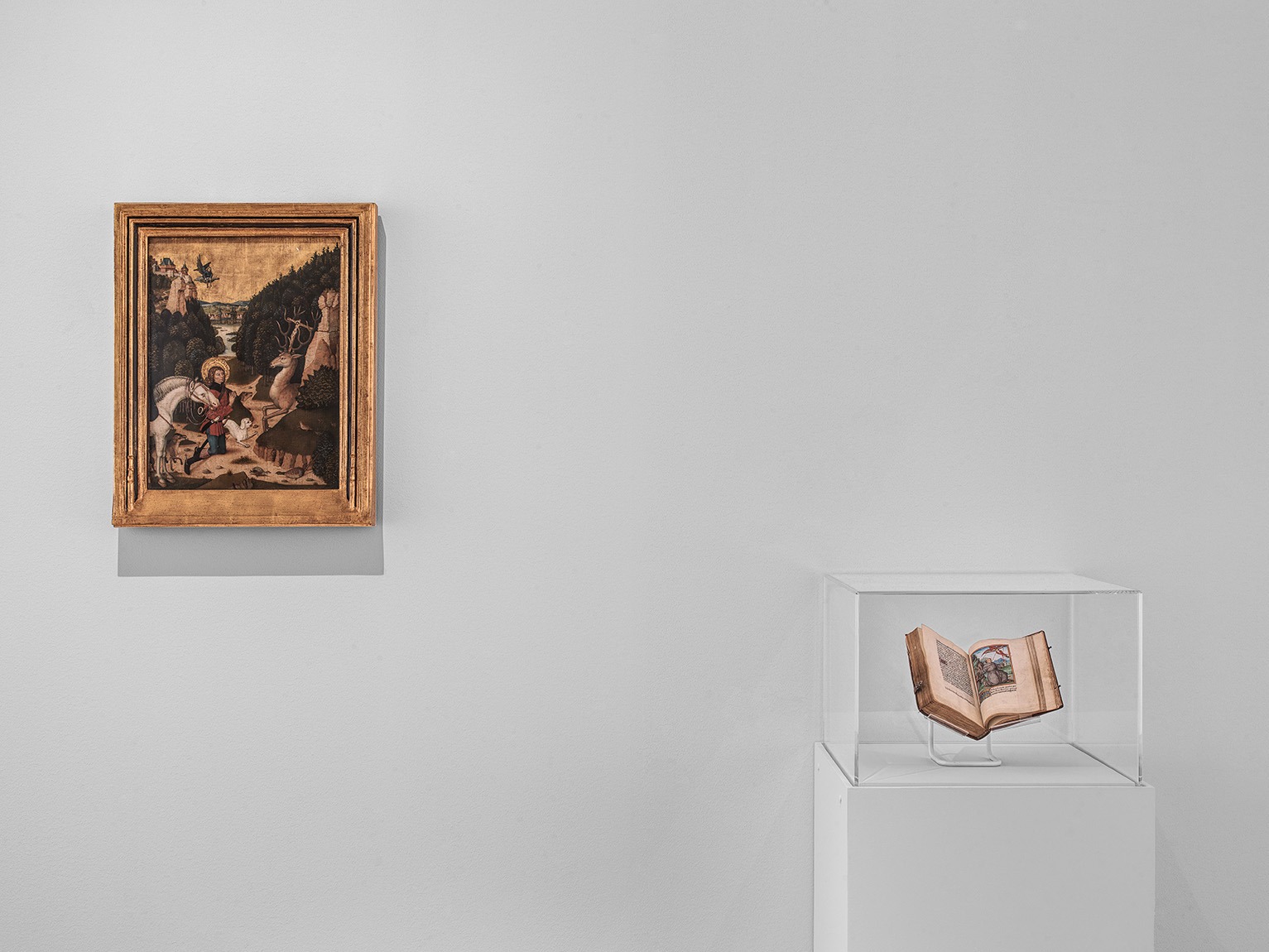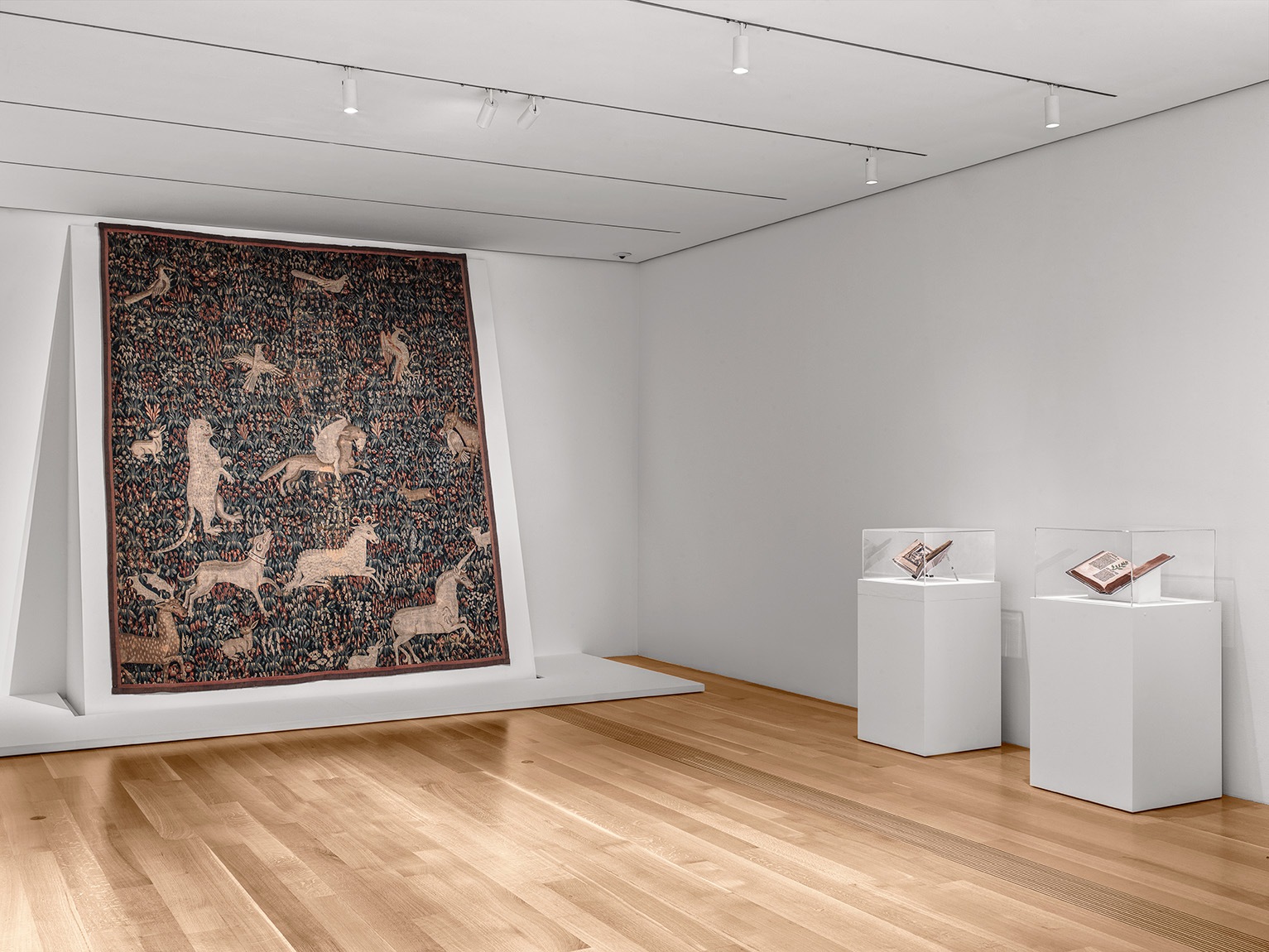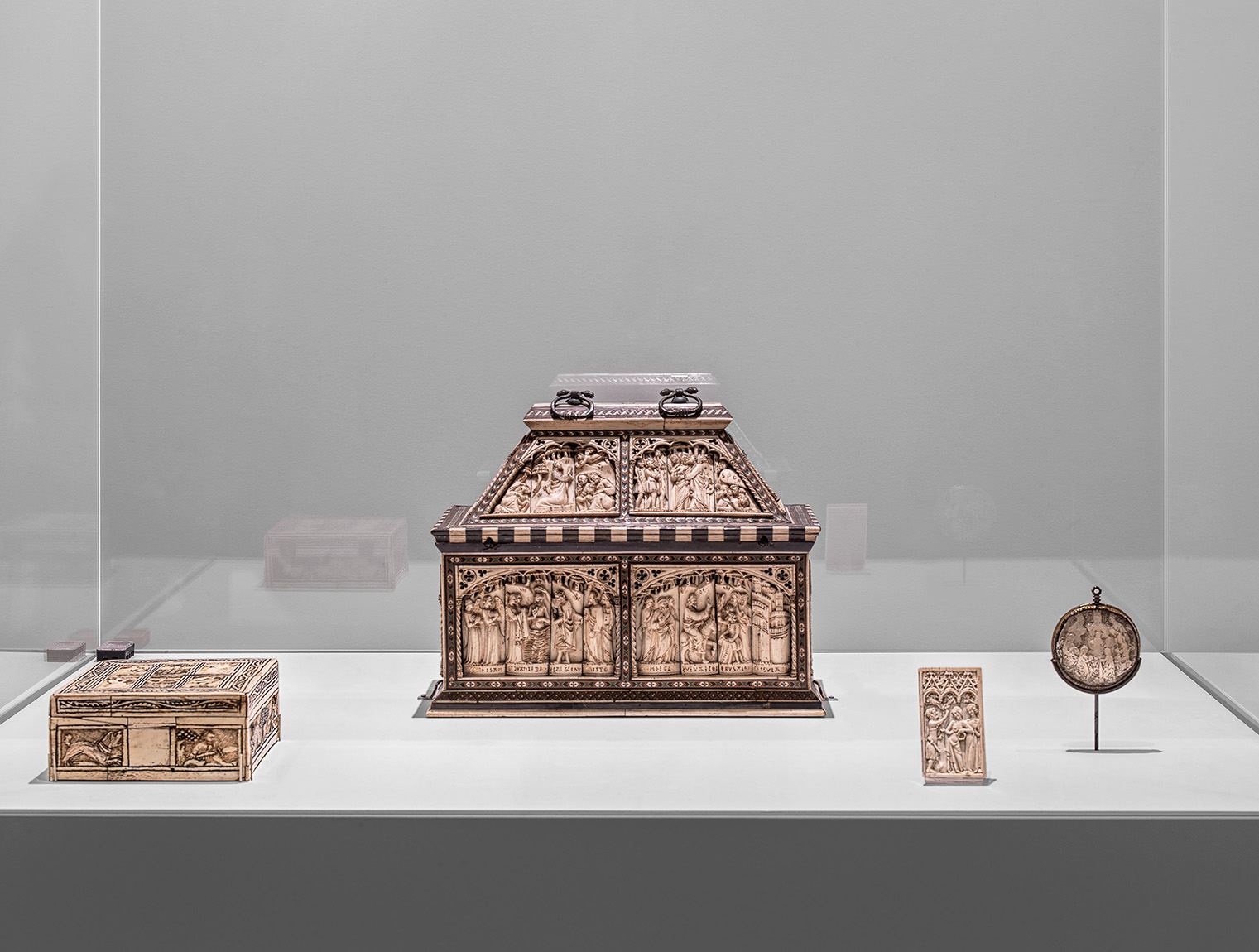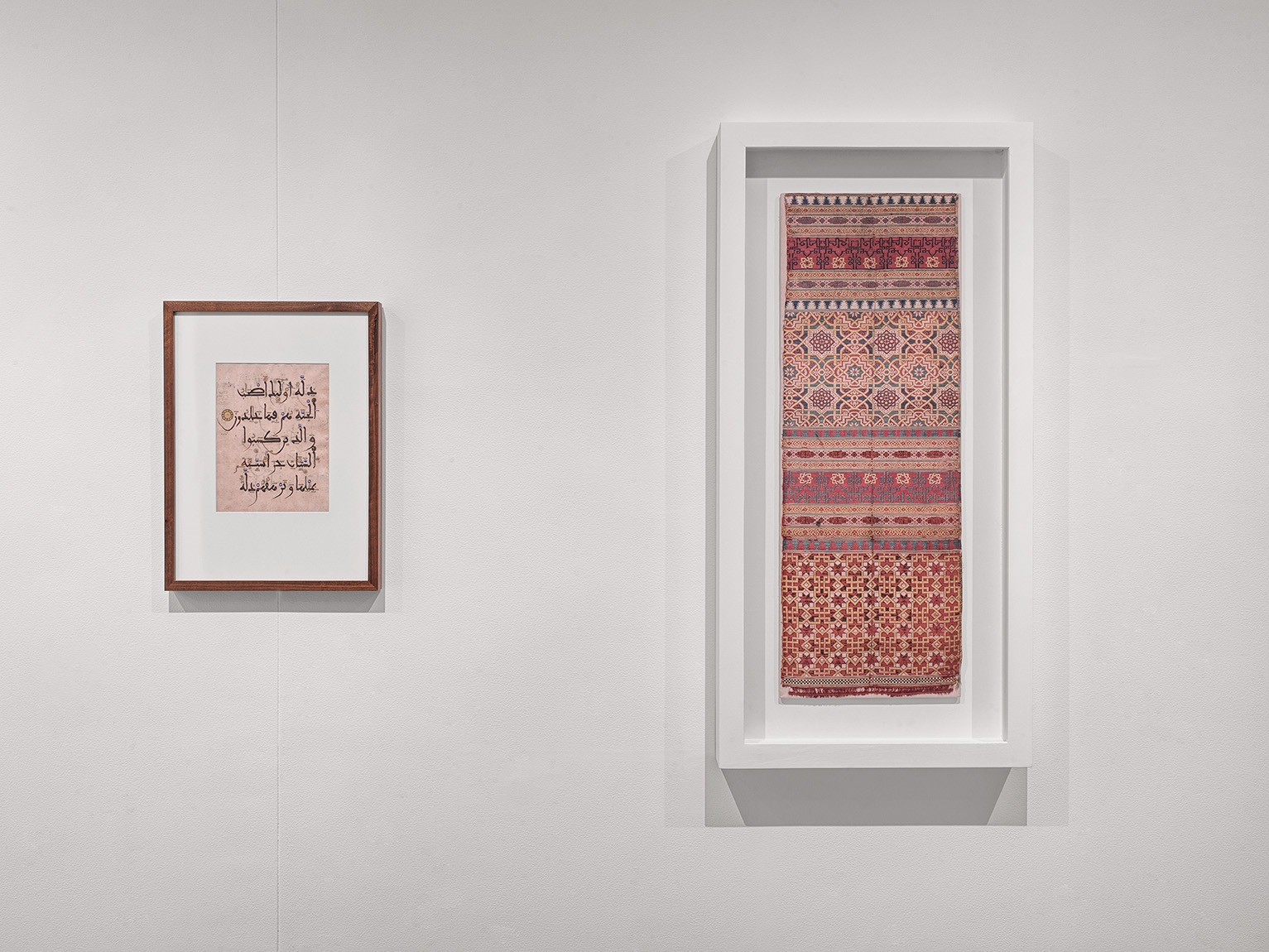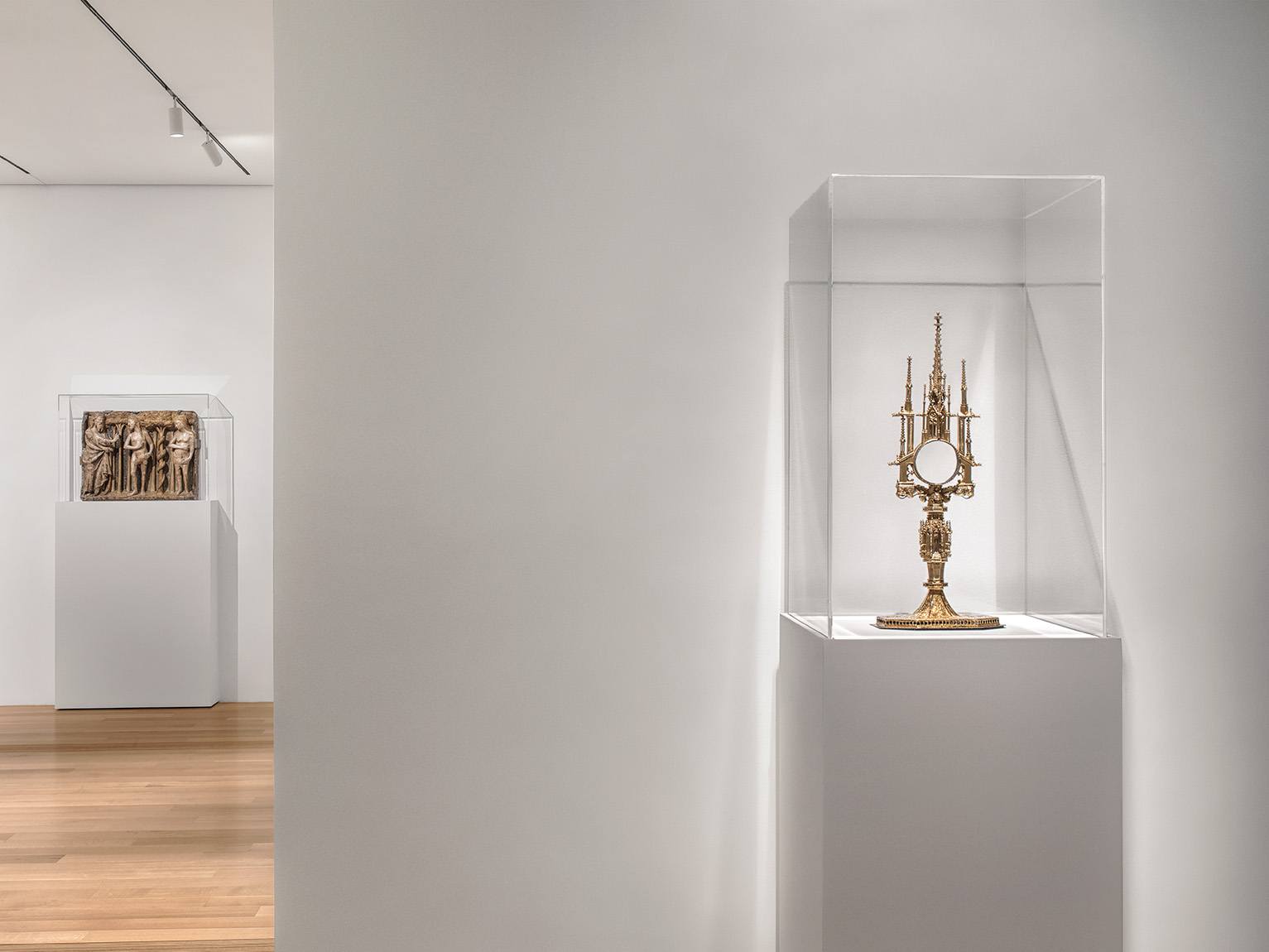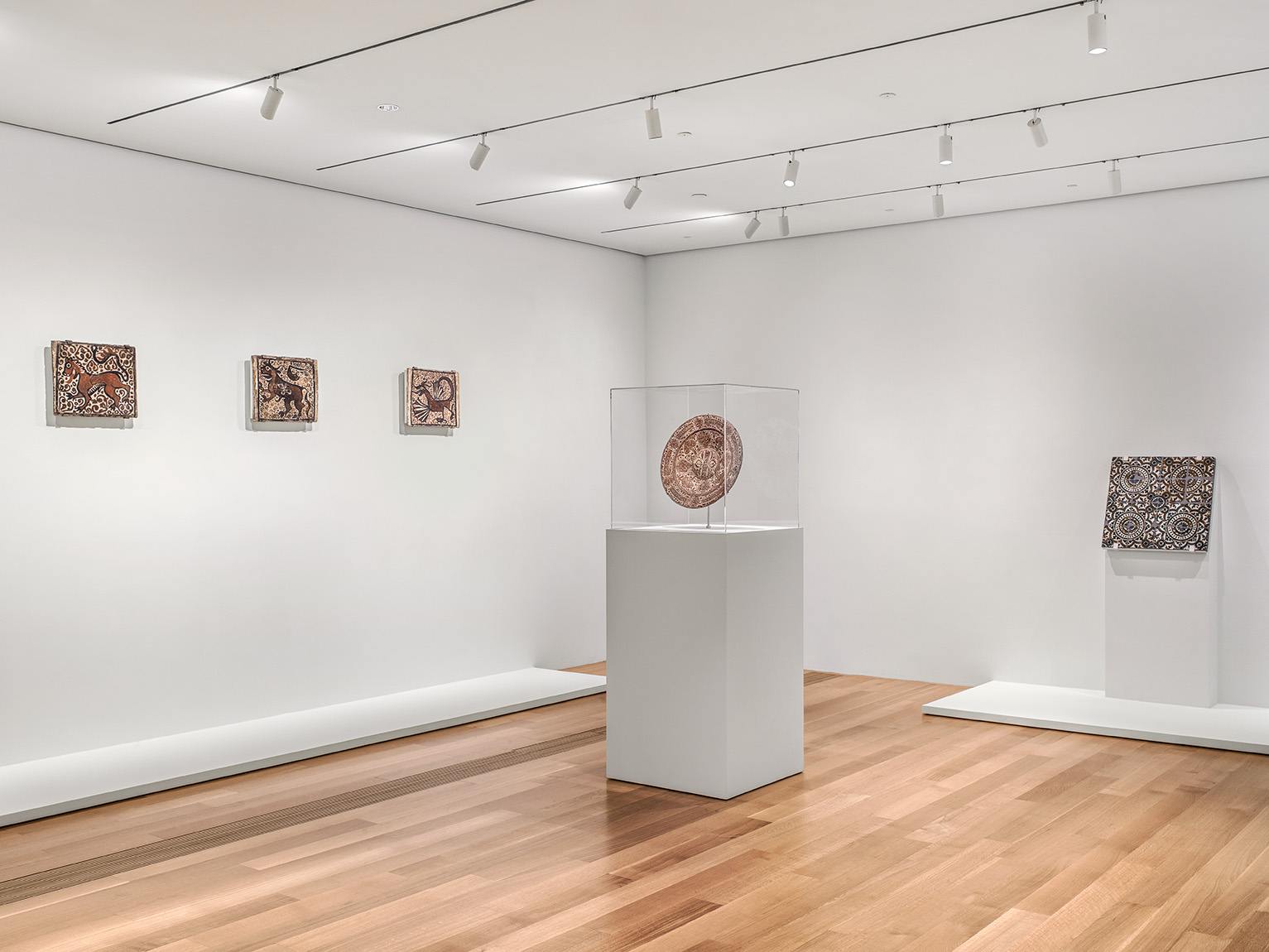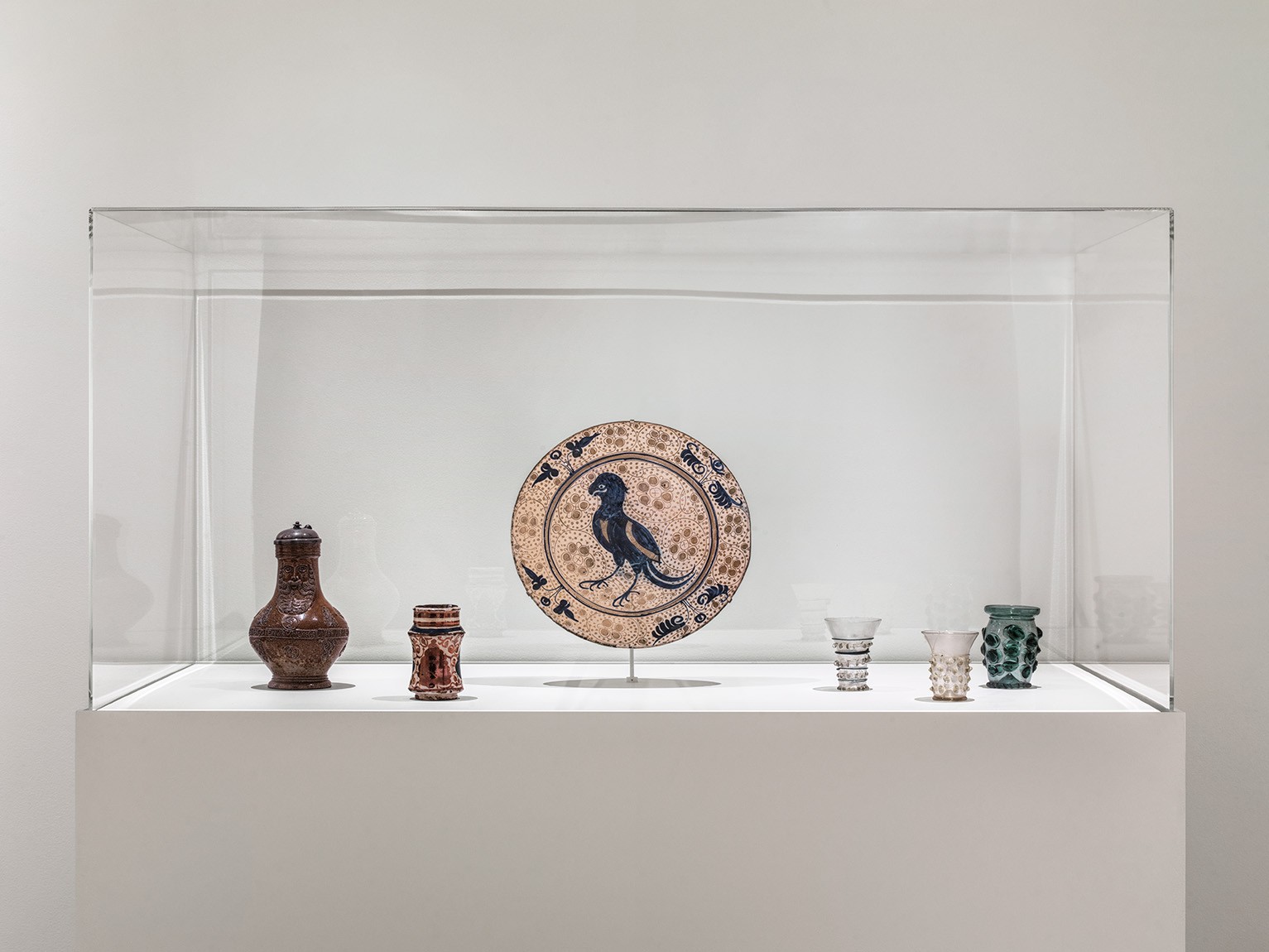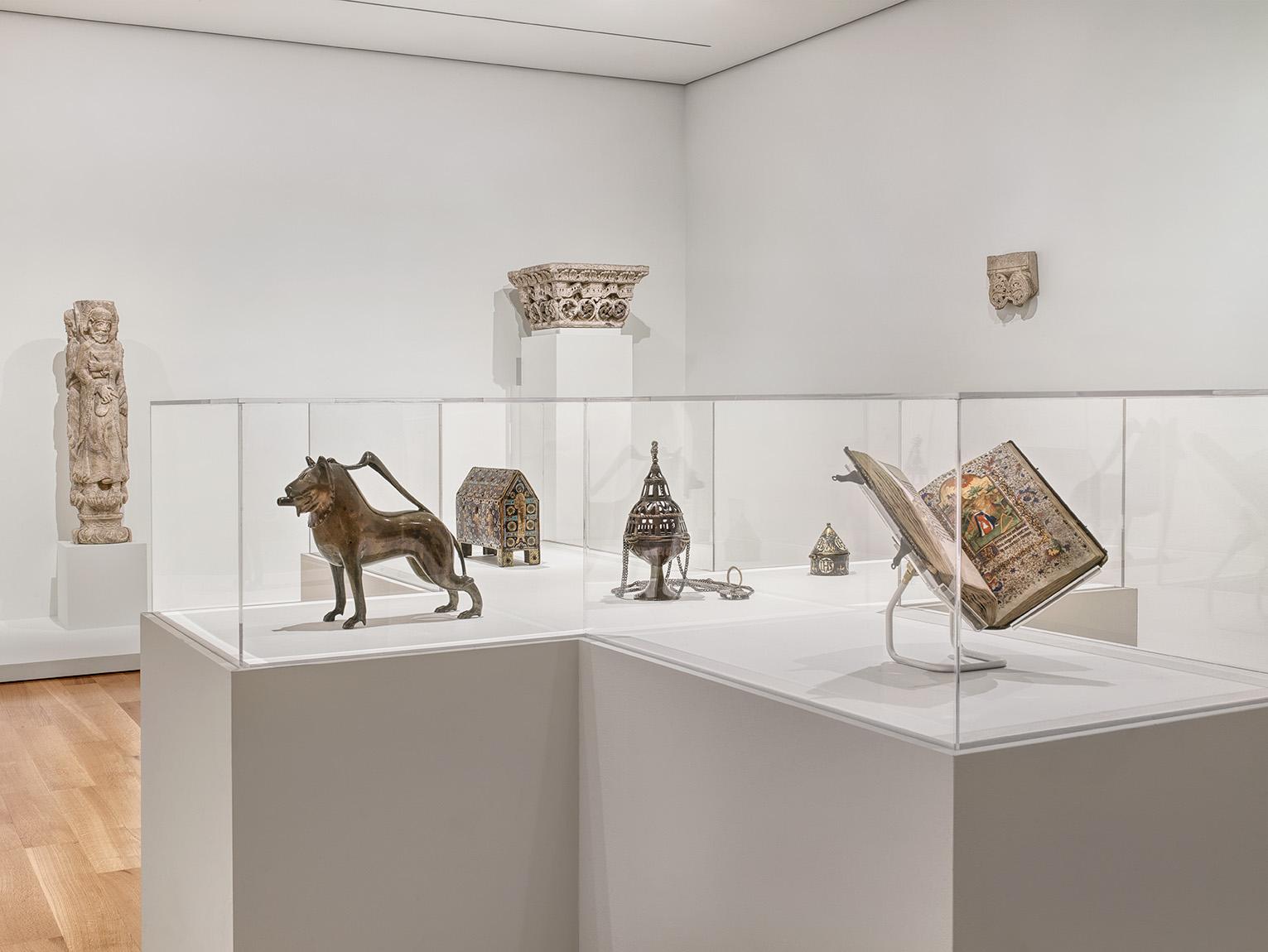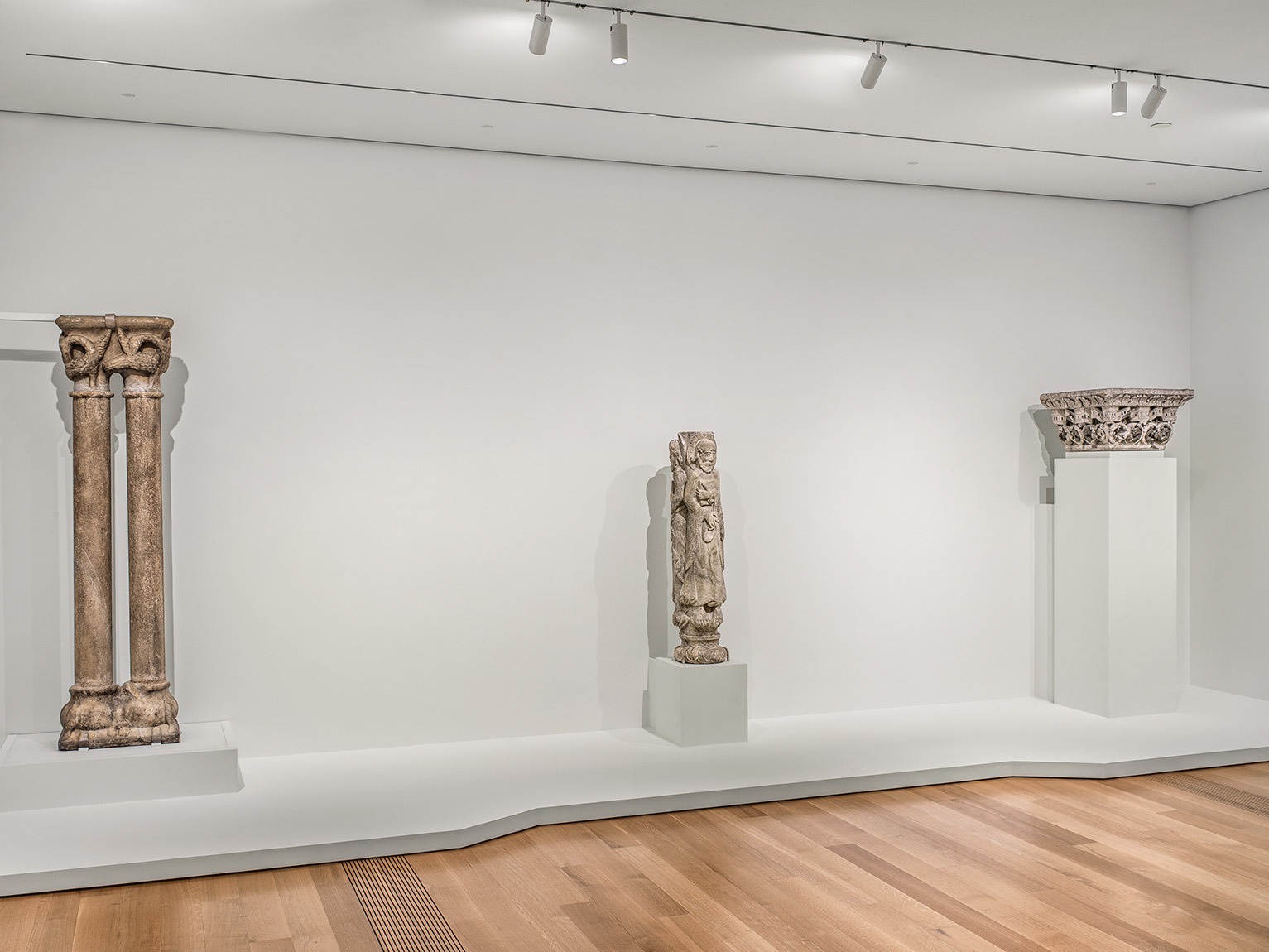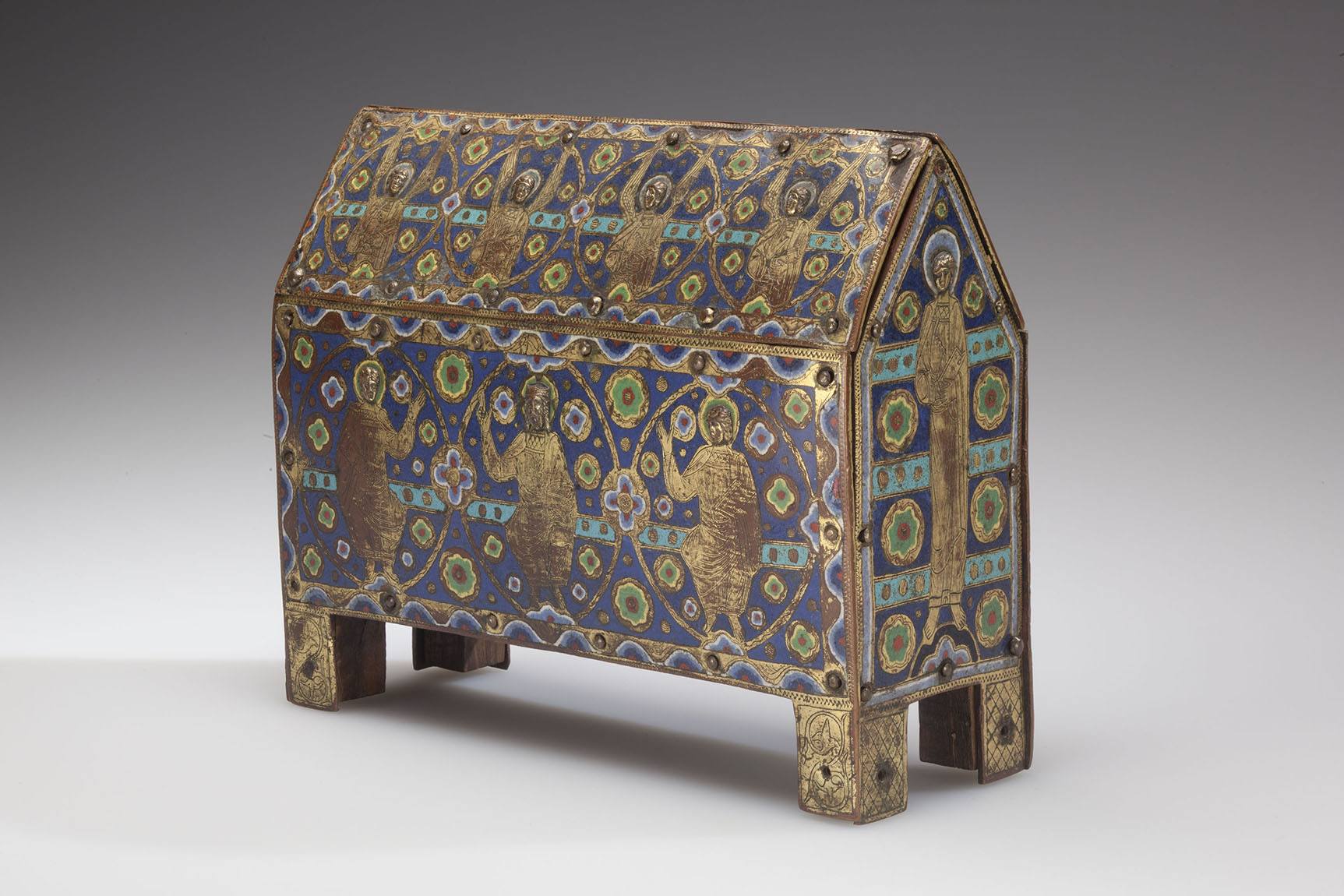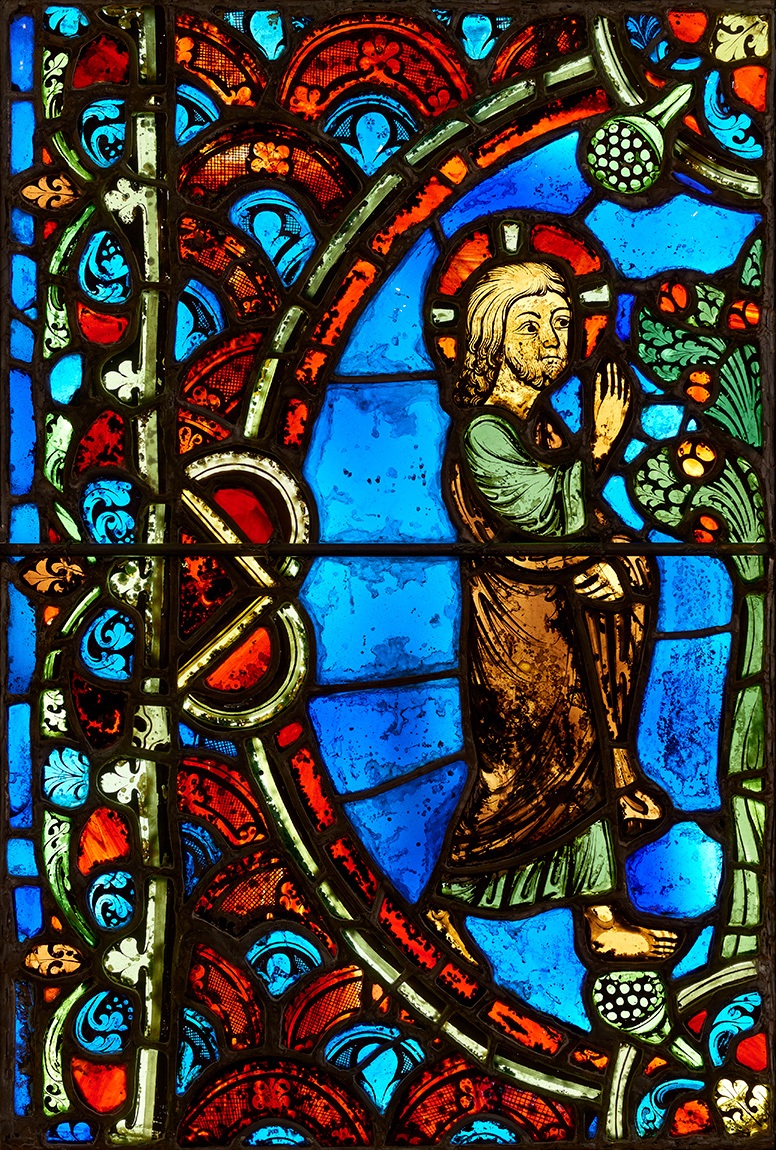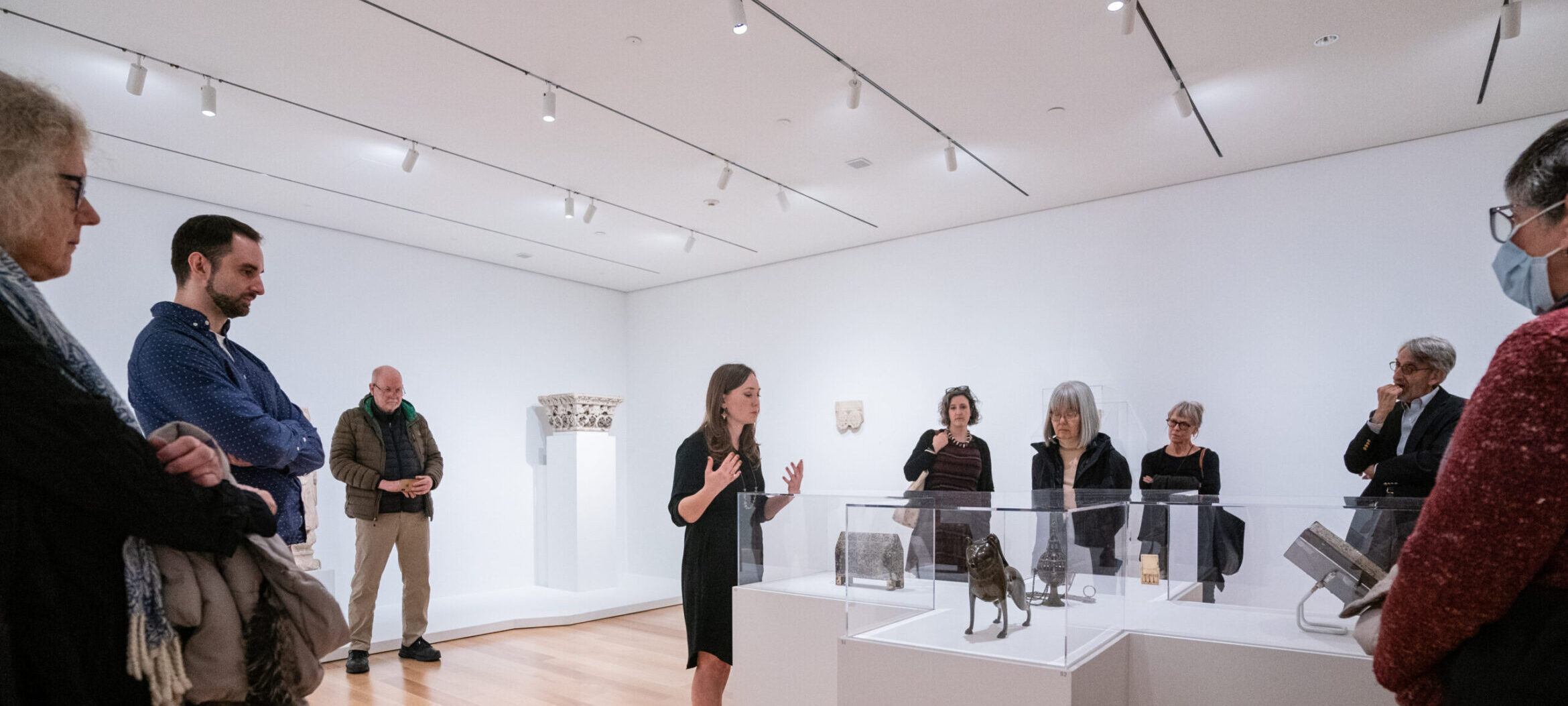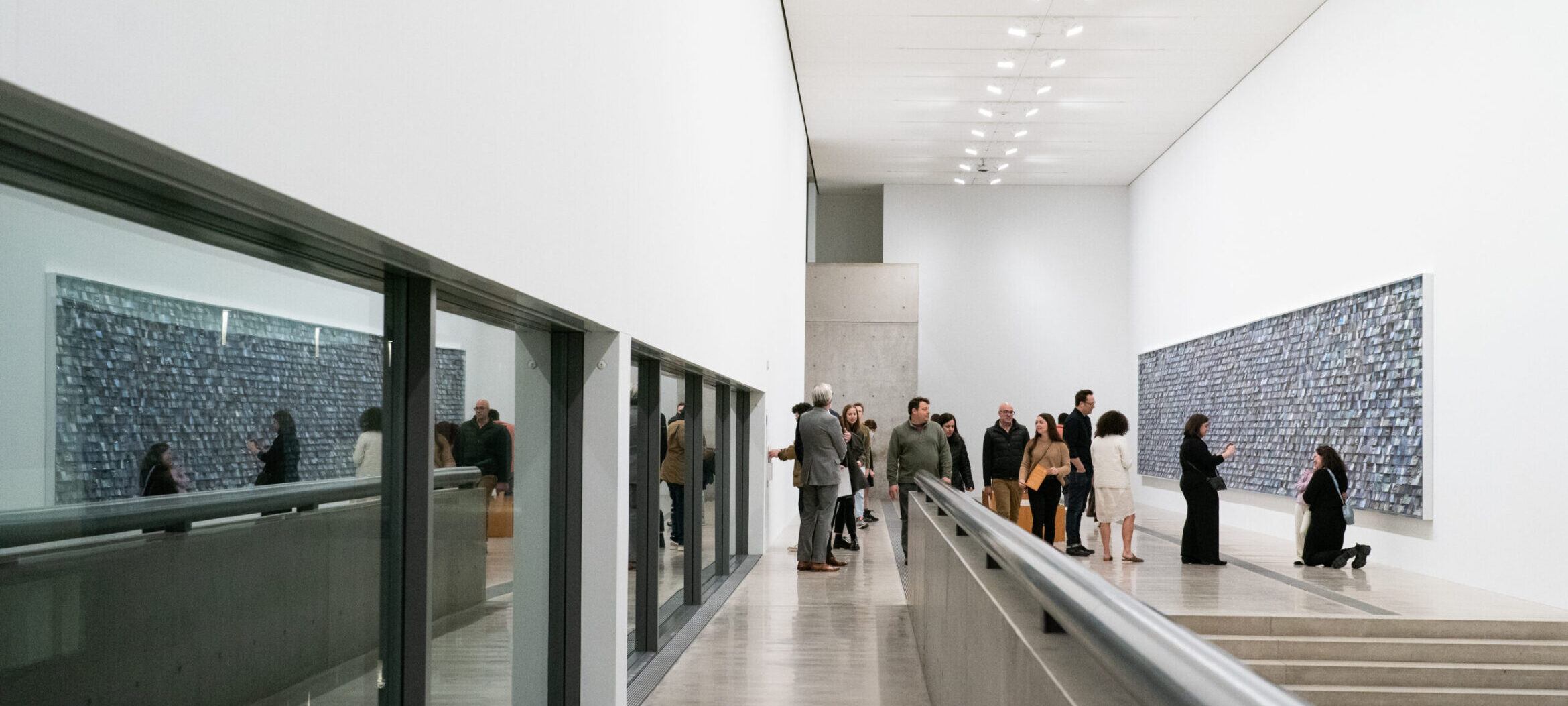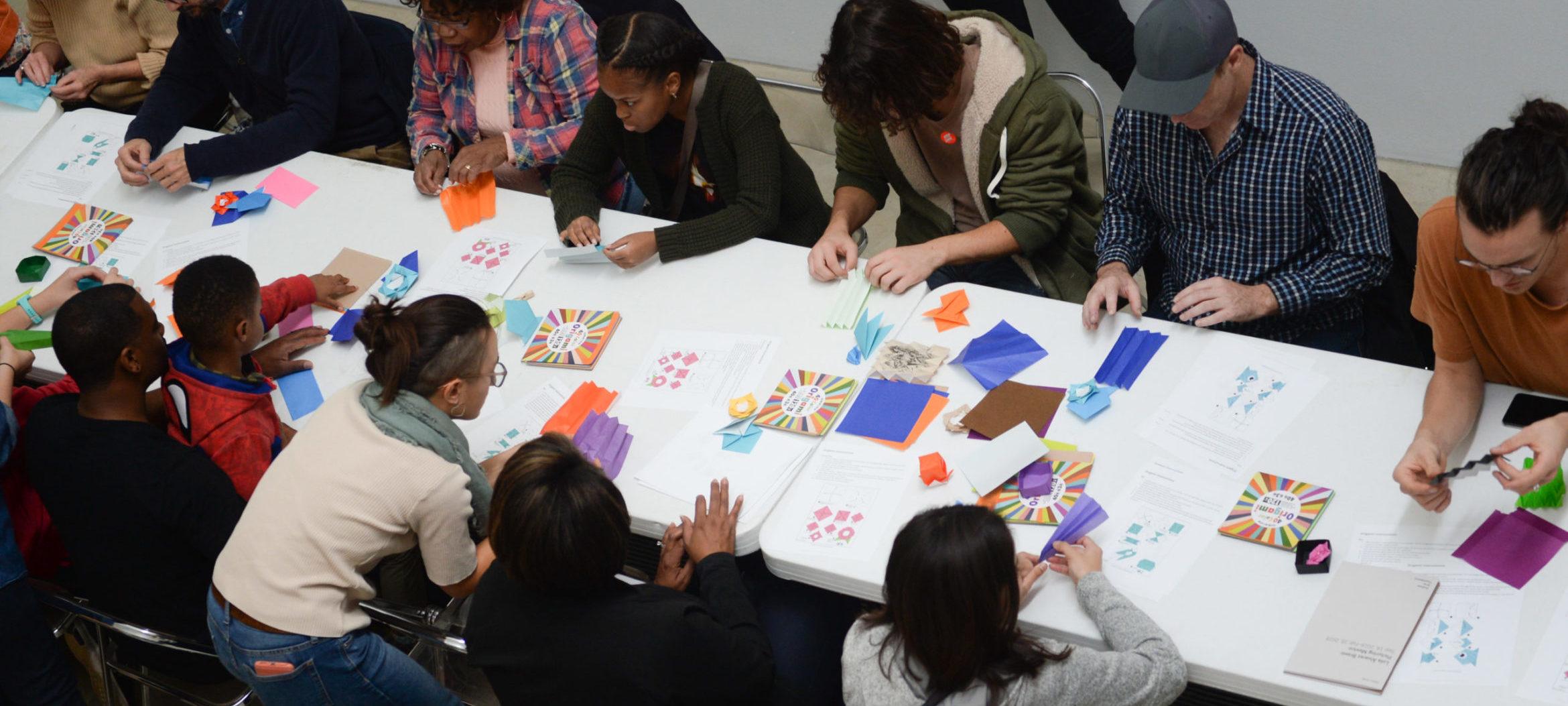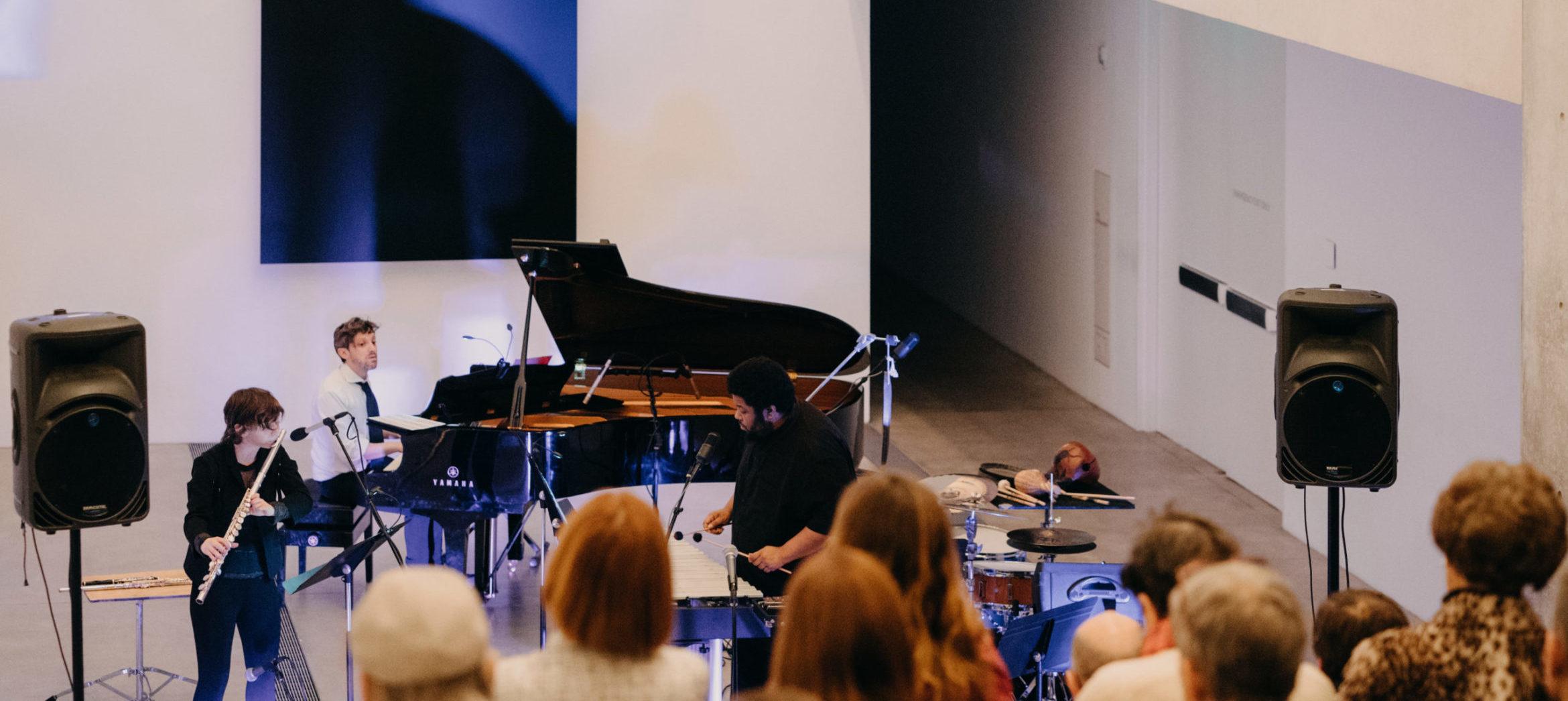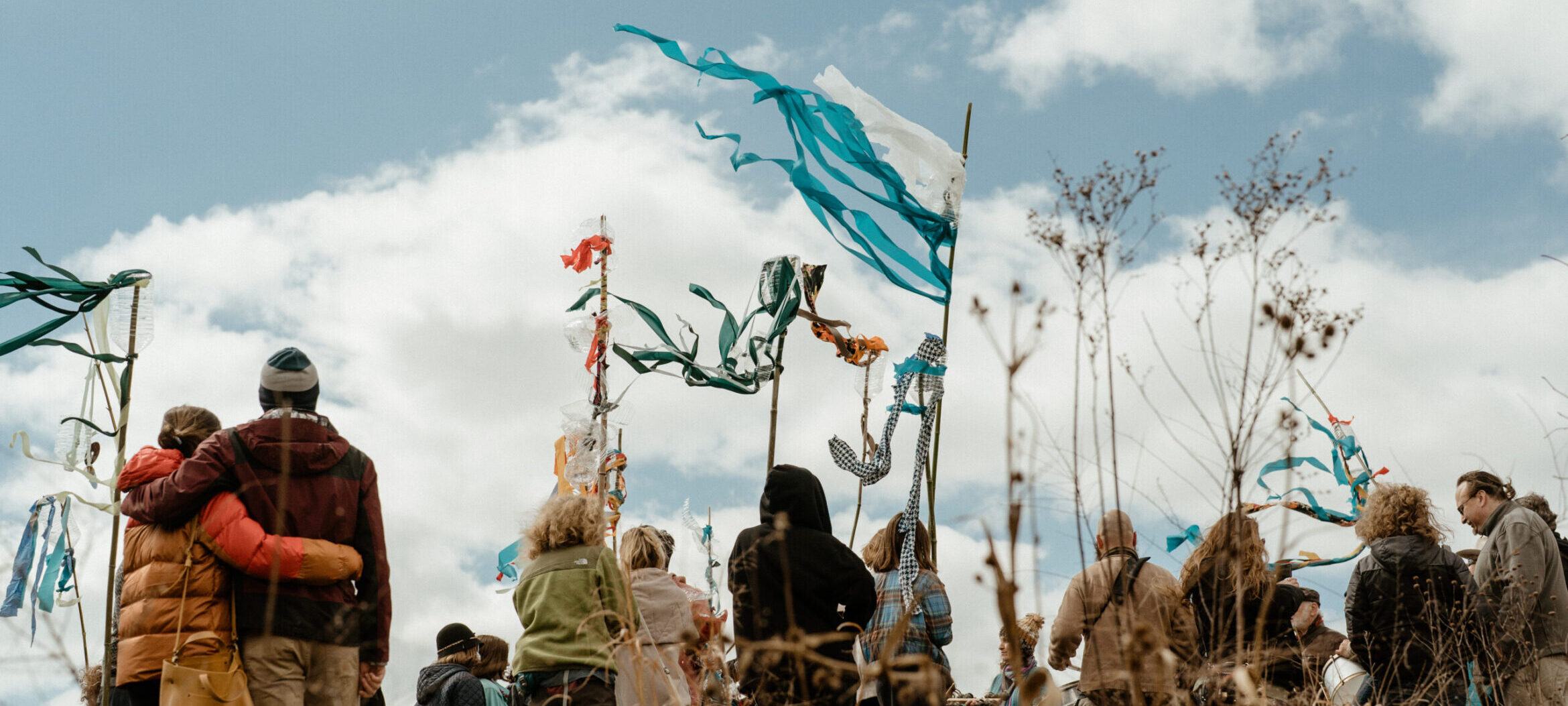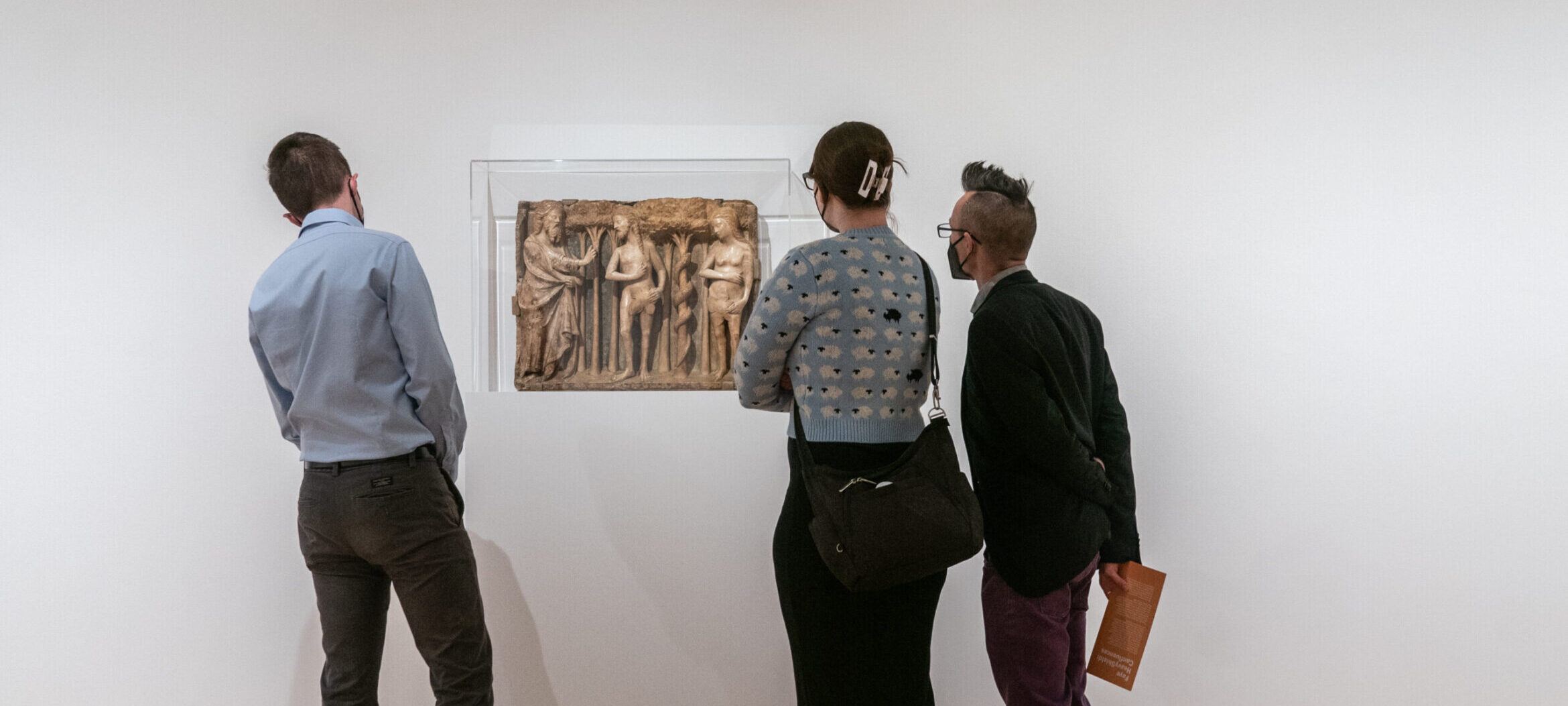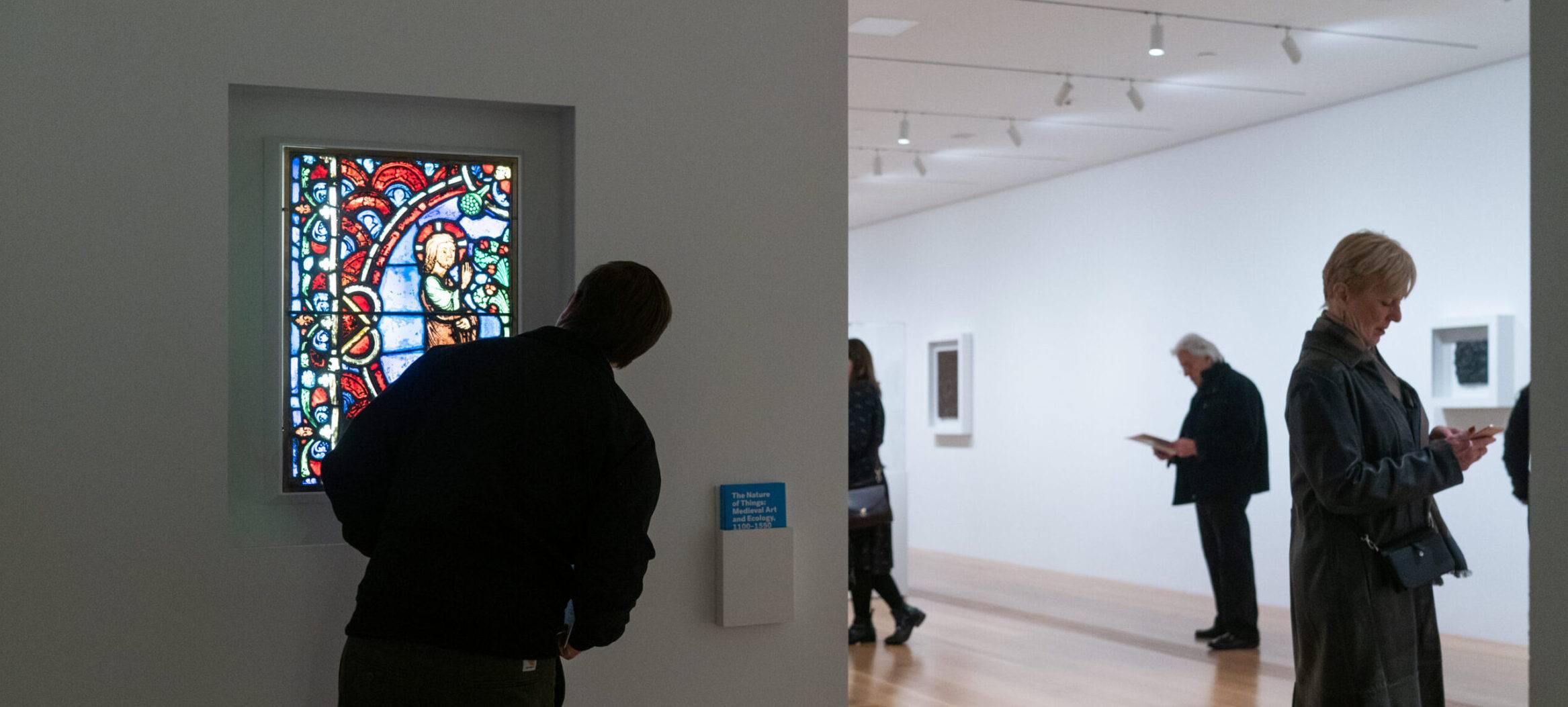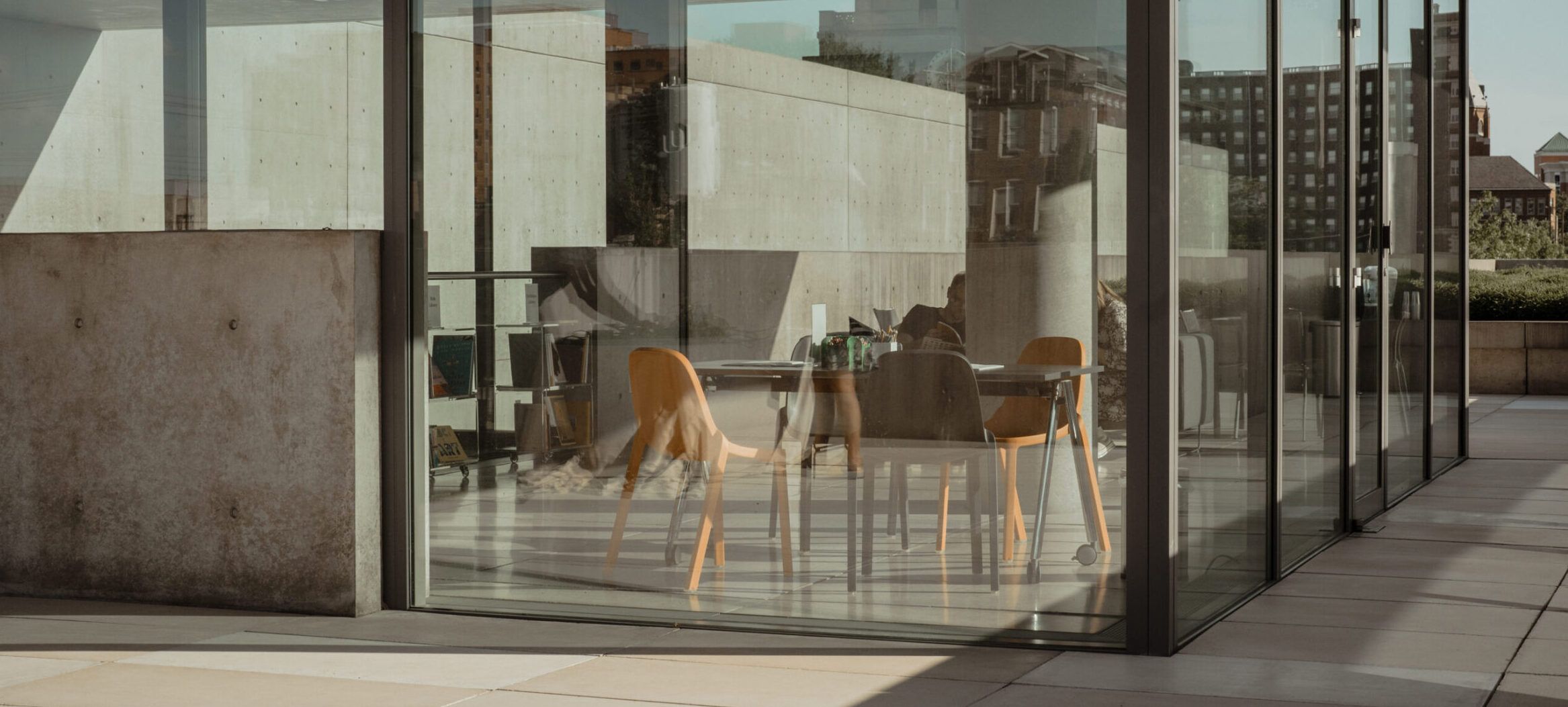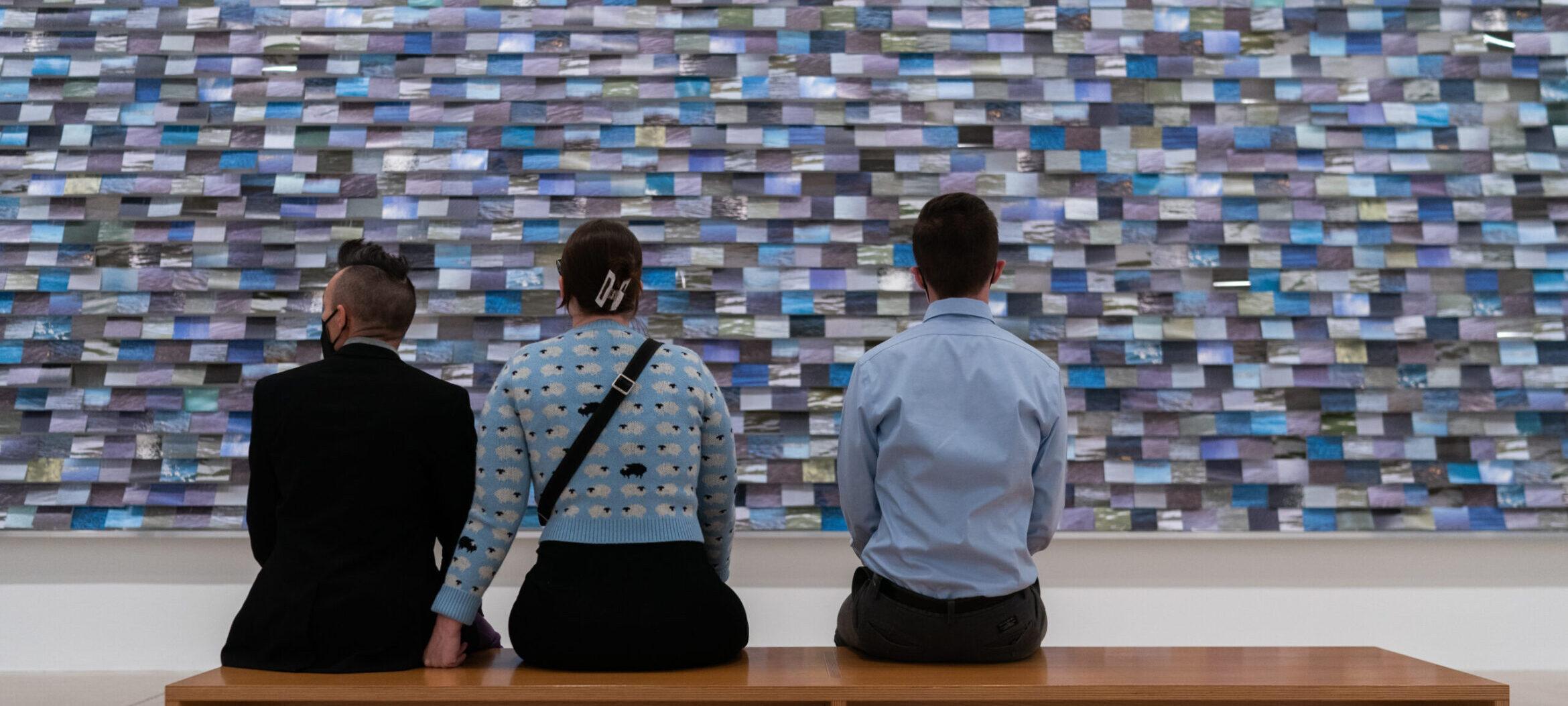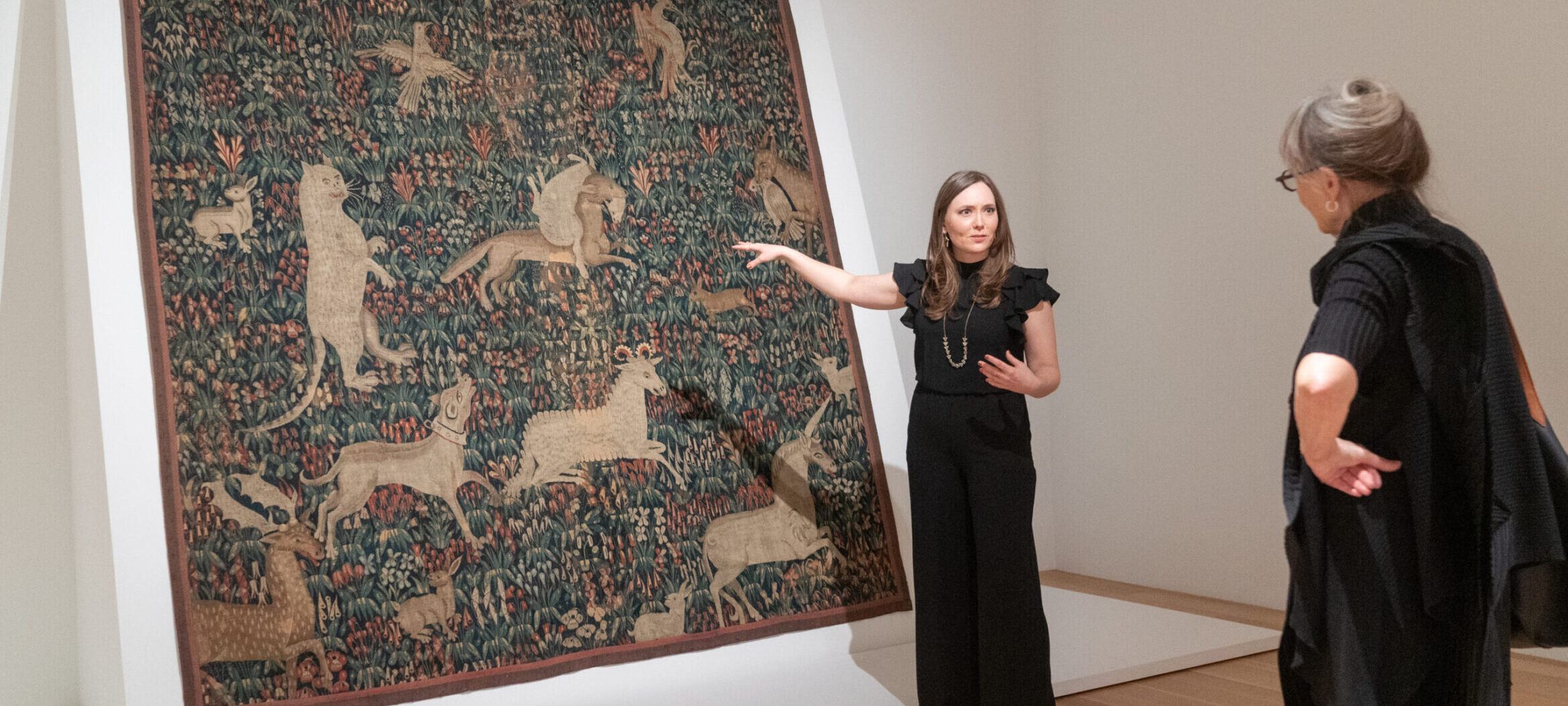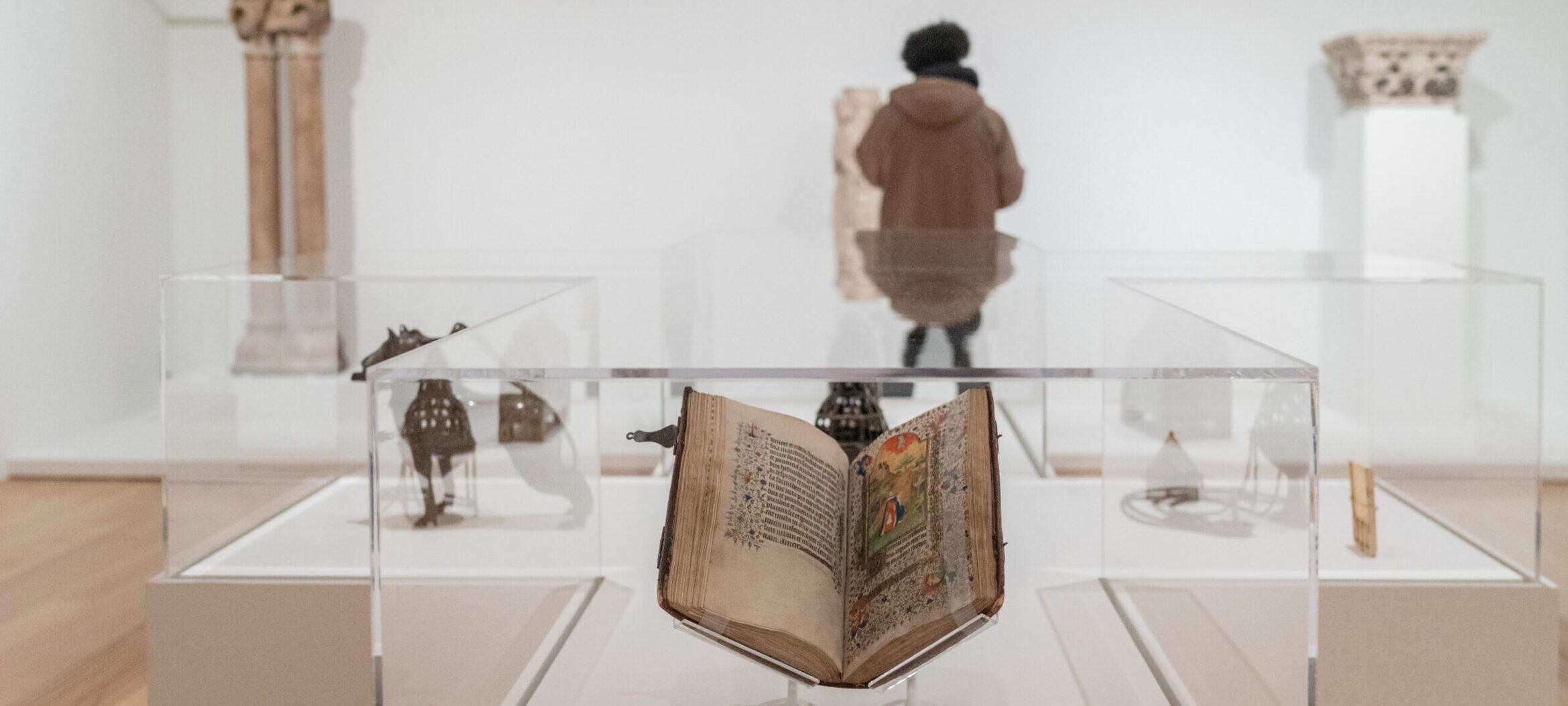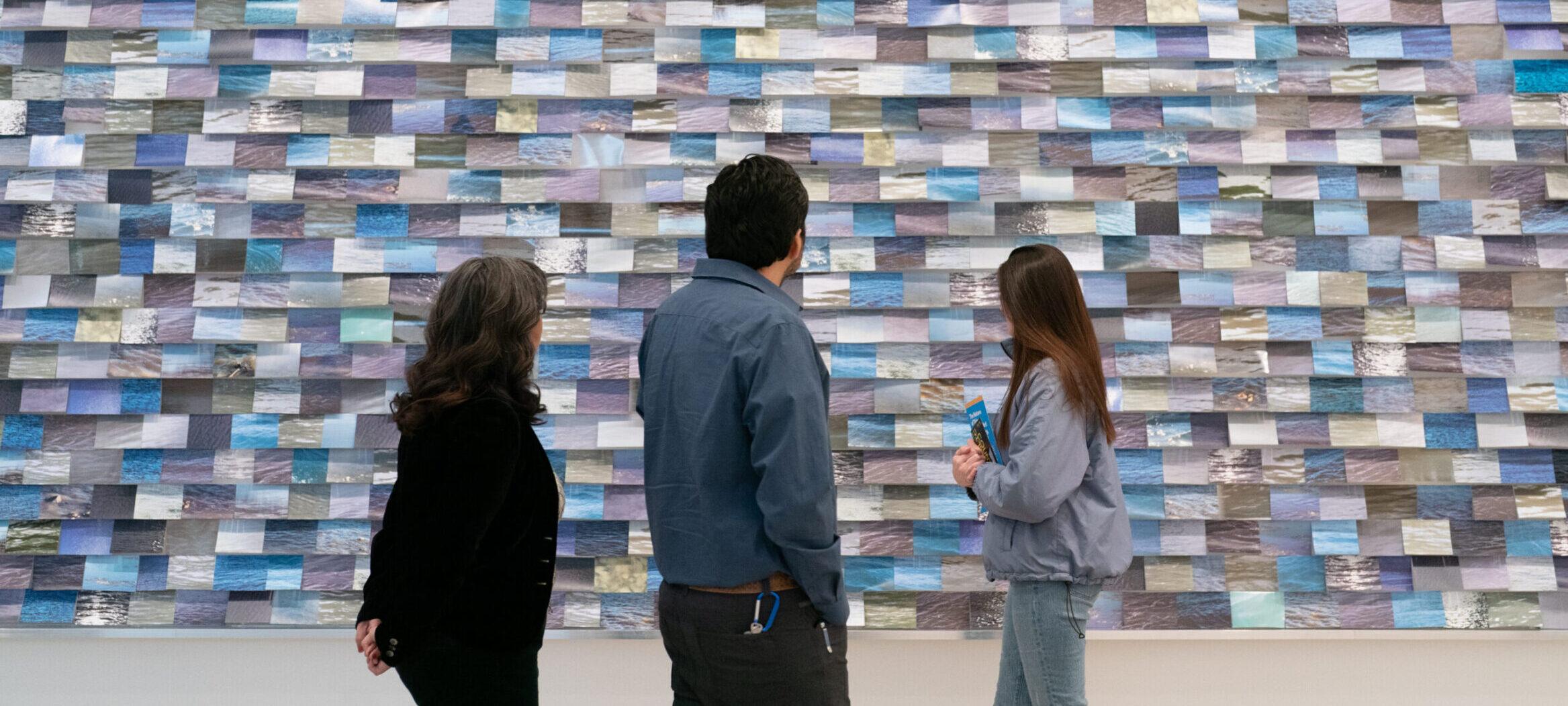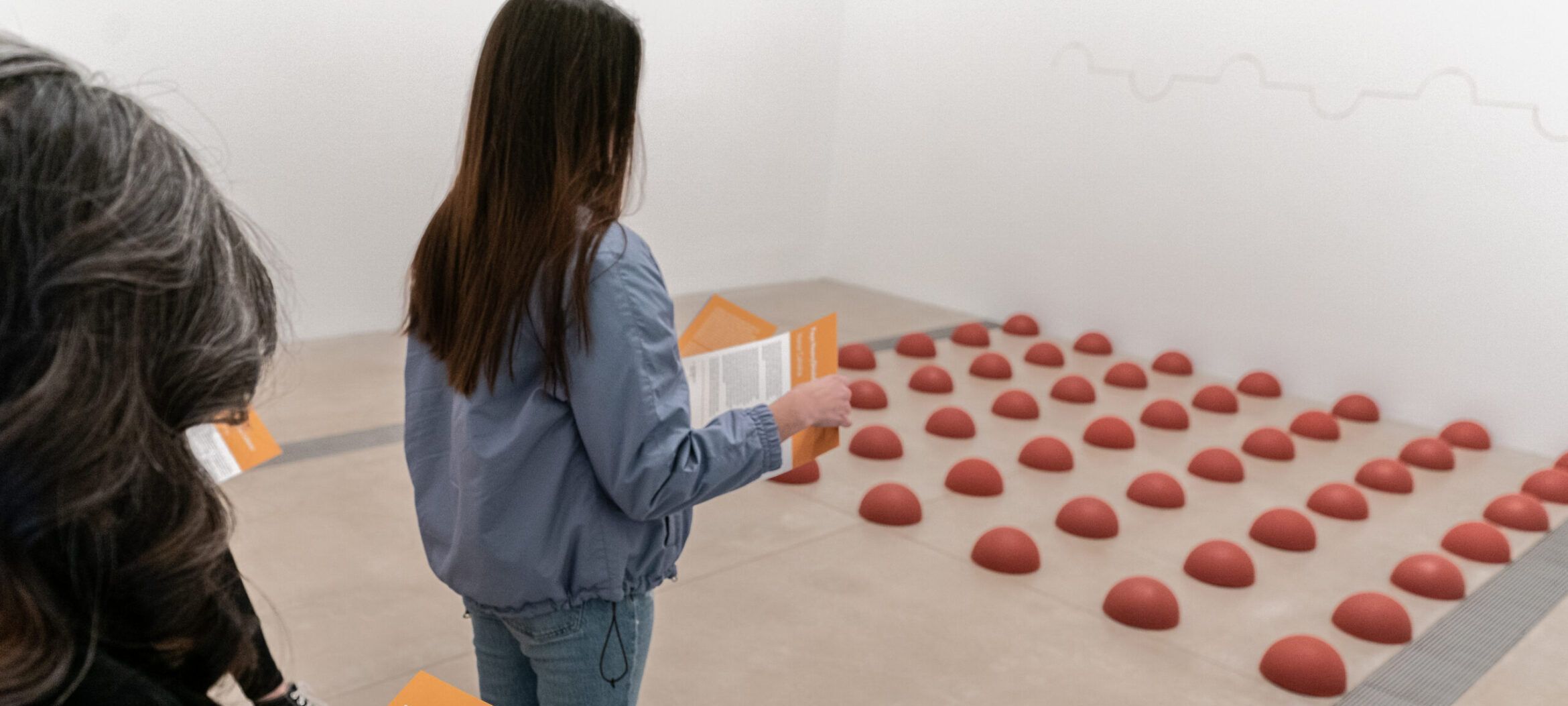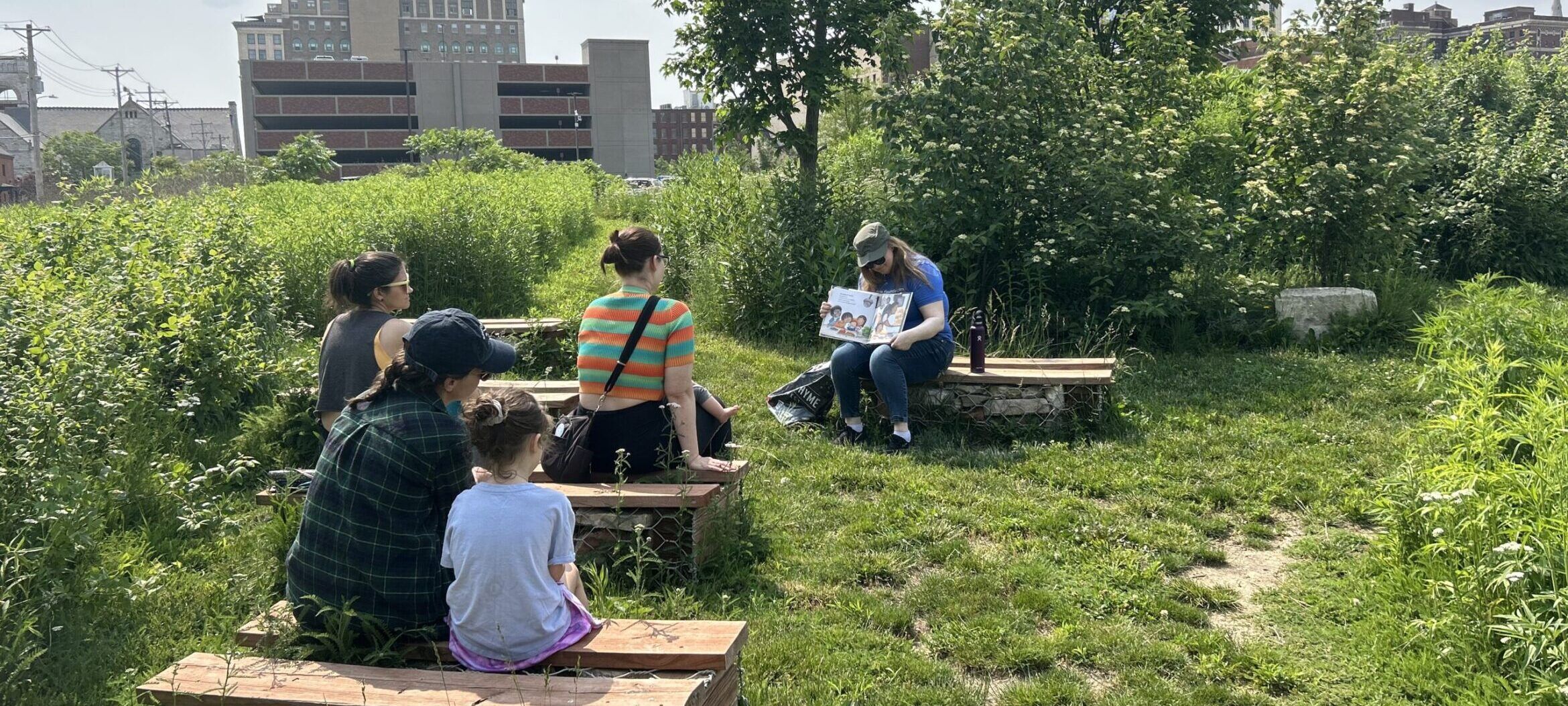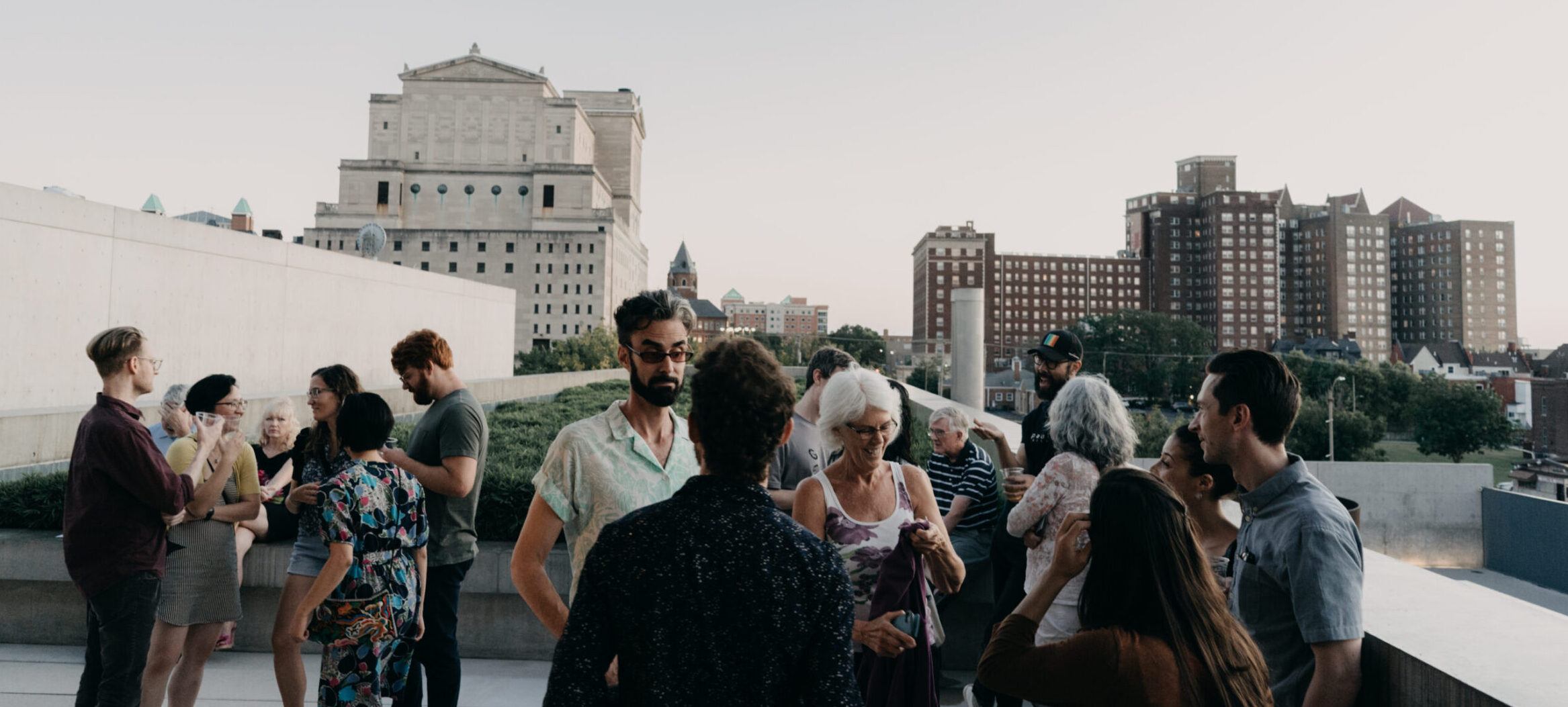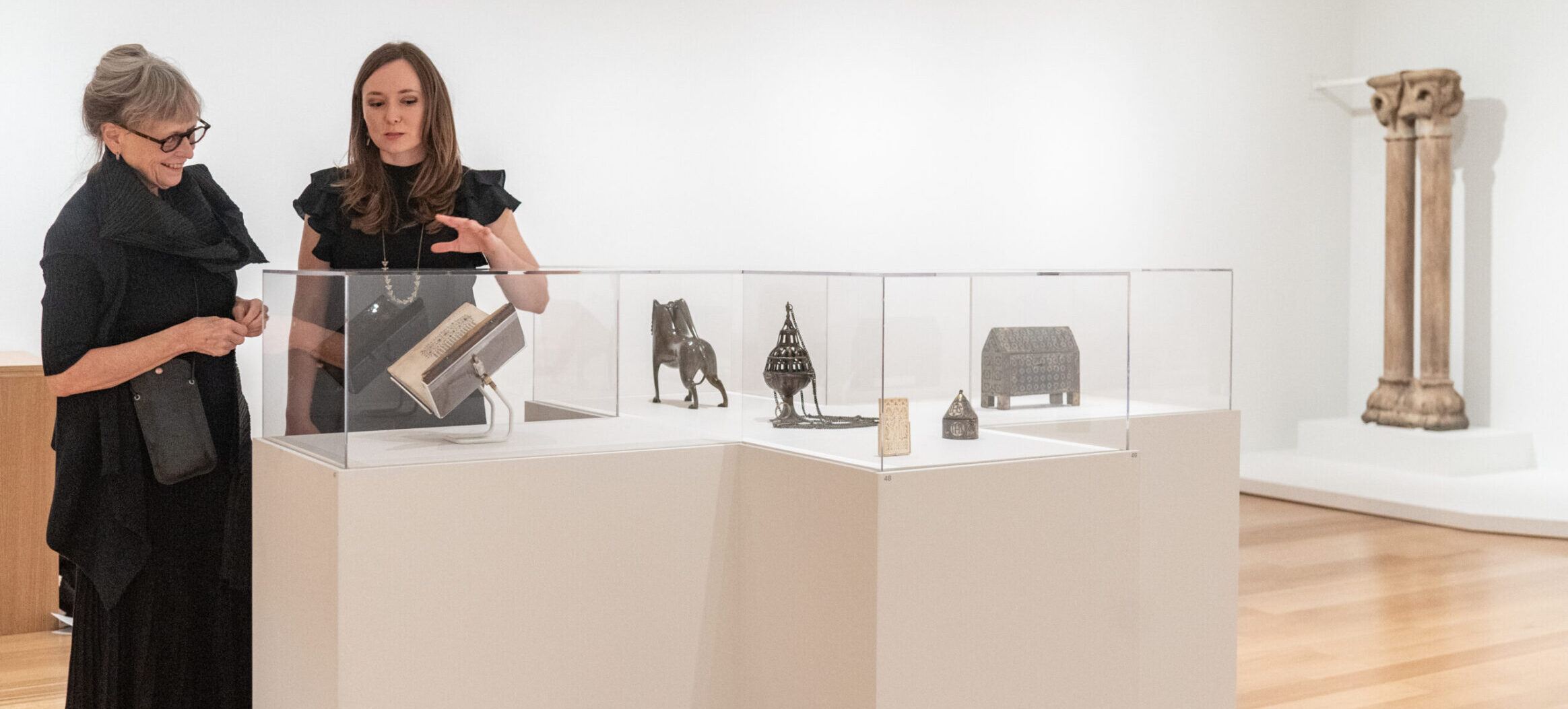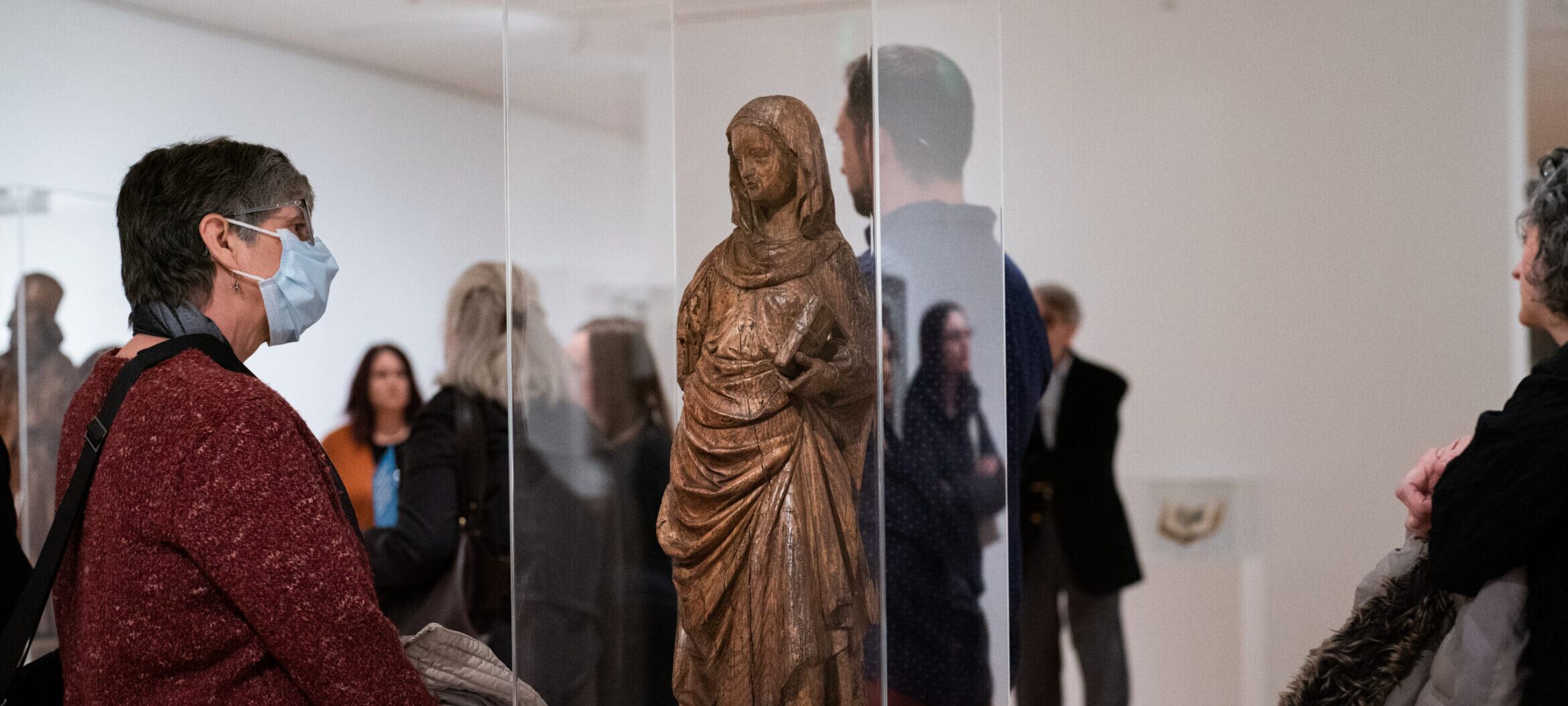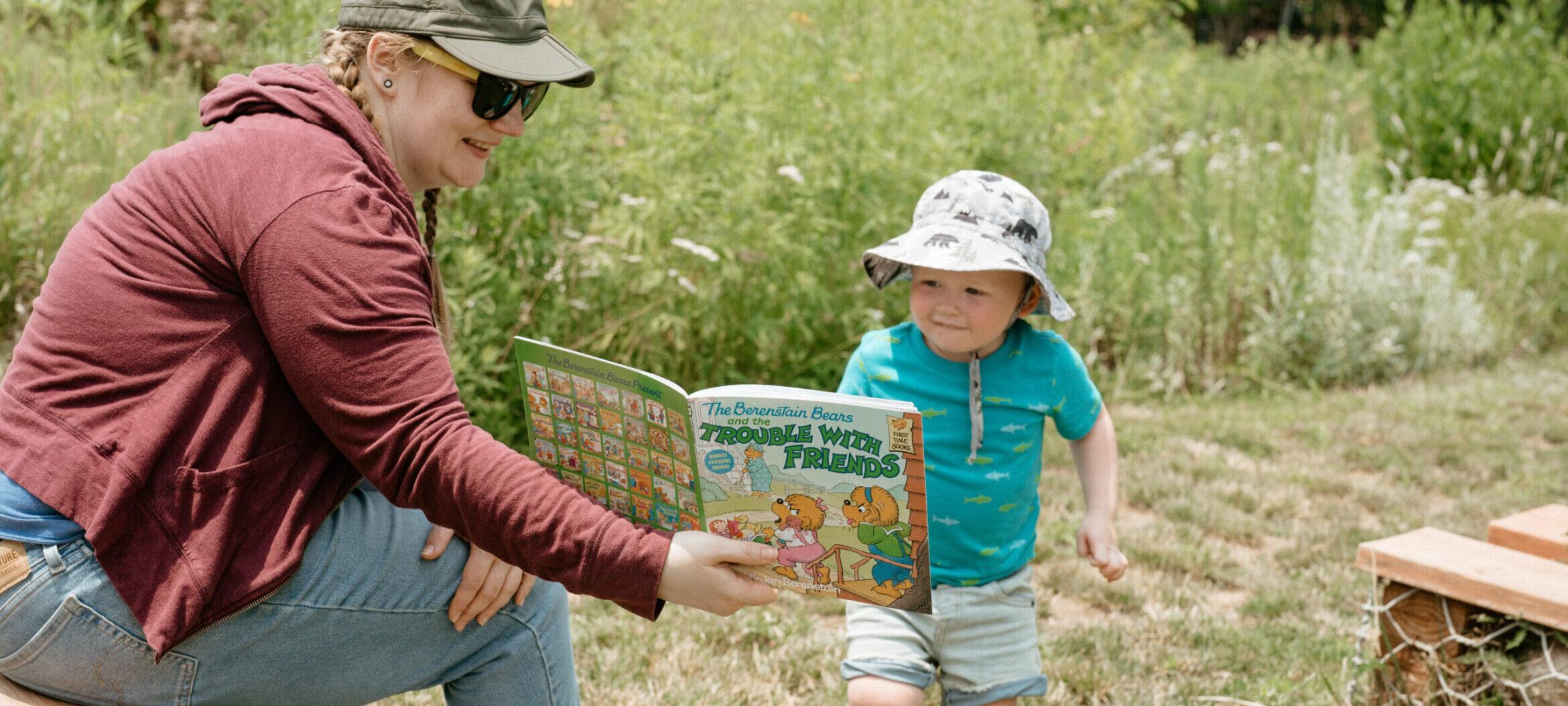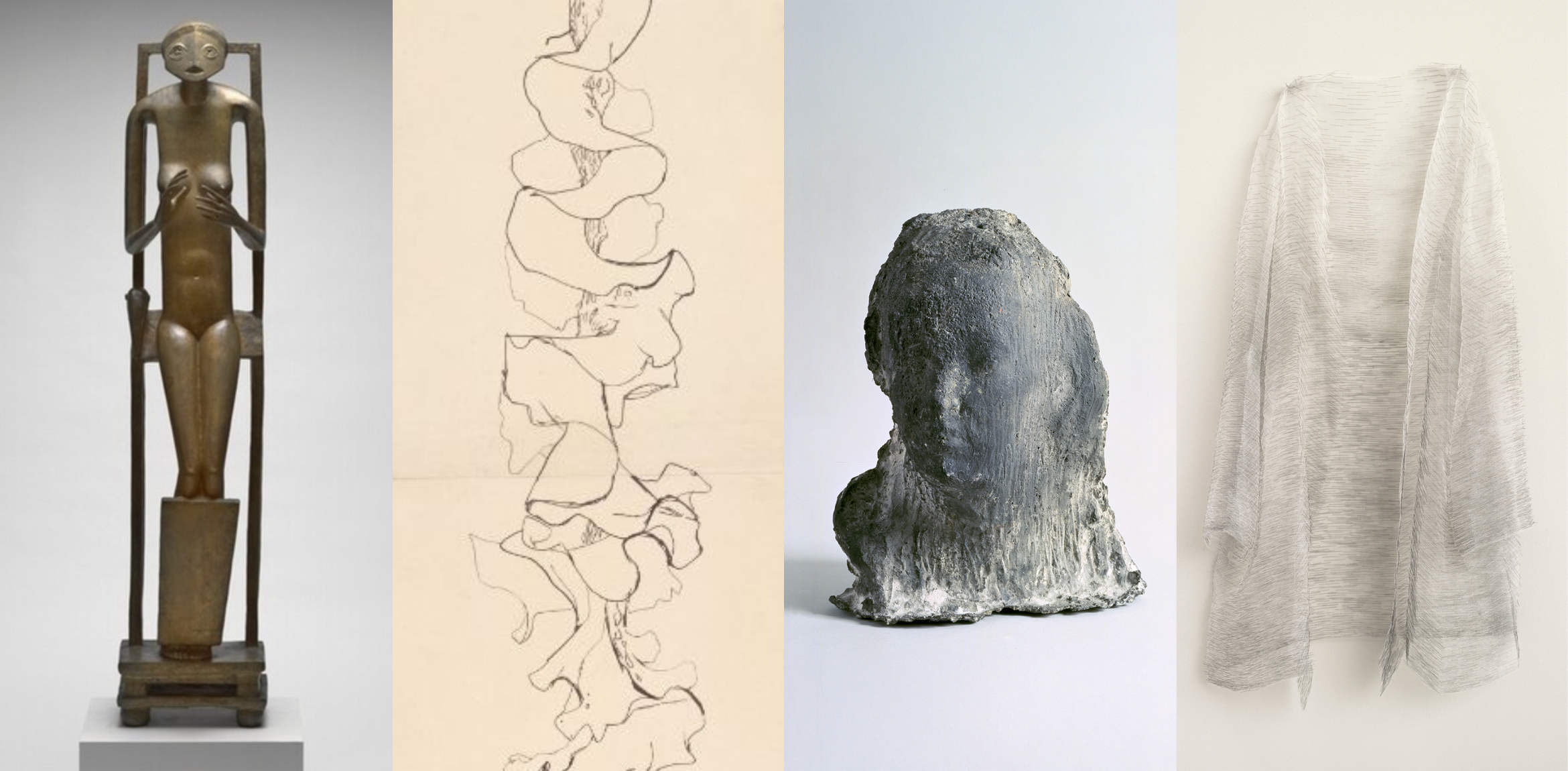What does it take to make a work of art? What are its environmental impacts? How does the natural world shape artistic practices? And what did this mean in the Middle Ages?
With nearly fifty sculptures, textiles, and books made between 1100 and 1550 CE, The Nature of Things highlights the links between artmaking and the environment in the later medieval era. Featuring a range of materials including wood, stone, cloth, and metal, this exhibition considers the vast array of natural resources needed to produce the artworks that decorated churches and households across Europe during the Middle Ages. The Nature of Things prompts us to recognize how the industries that artists relied on—forestry, quarrying, mining, and farming—temporarily and permanently affected landscapes throughout Europe, Africa, and Asia.
Decorative and functional, sacred and secular, these artworks also shed light on medieval people’s nuanced engagements with the natural world. Some represent responses to moments of scarcity, abundance, or ecological change. Others demonstrate the rich inspiration that artists and patrons drew from plants and animals. Still others reveal attitudes of care and reverence. The Nature of Things is the first museum exhibition to examine medieval objects through this lens, offering new ways of thinking about the relationships between people, art, and environments.
